Post by kerouac on May 26, 2010 16:45:11 GMT -5
One of the things that makes Paris such an admired city (I suppose) is because the urban planners have always come up with interesting ideas on how to handle development. Over the centuries, people have found a lot of the changes shocking or controversial, not the least of were those perpetrated by Baron Haussmann who bulldozed half the city to make wide boulevards so that the army could crush uprisings. People absolutely despised what he did, and yet now the Haussmann architecture is the major icon that identifies a Parisian street to people anywhere in the world (must think to do a report on the Haussmann style one of these days). The Eiffel Tower, the Centre Pompidou, the Pyramide du Louvre or the Opéra Bastille have all shocked over the years. Some have been accepted and others remain controversial.
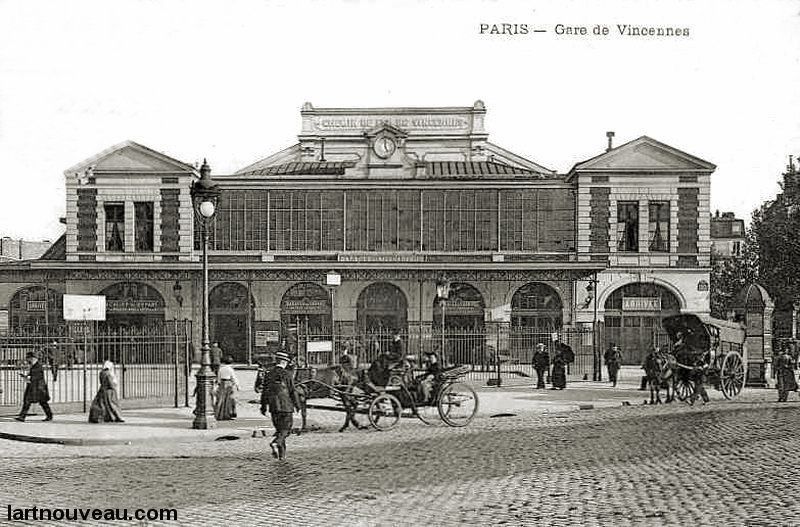 Today’s story starts with what Parisians called the “Gare de la Bastille” but whose official name was the “Gare de Vincennes” because it was the terminus of the suburban train line that serviced Vincennes and points east. It was built in 1859 and was your standard medium-sized Parisian train station like the Gare d’Orsay (which has gone on to other occupations). Wikipedia can give you all of the bla-bla details: 30 meters wide, 250 meters long…
Today’s story starts with what Parisians called the “Gare de la Bastille” but whose official name was the “Gare de Vincennes” because it was the terminus of the suburban train line that serviced Vincennes and points east. It was built in 1859 and was your standard medium-sized Parisian train station like the Gare d’Orsay (which has gone on to other occupations). Wikipedia can give you all of the bla-bla details: 30 meters wide, 250 meters long… 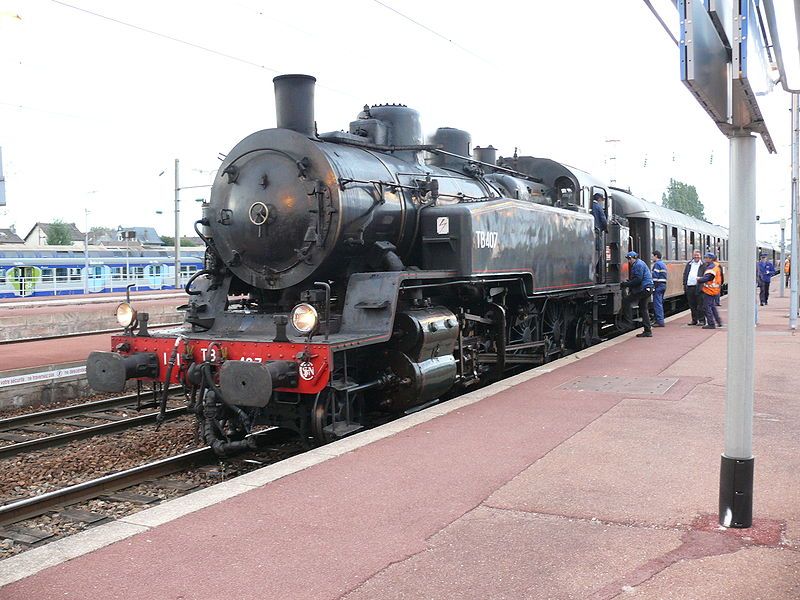
I never saw the station open myself, although I could have as a little boy, because it remained in service until the RER A express metro line opened in 1969 and intercepted its suburban tracks. Amazingly enough, the Bastille line operated steam engines until the day it closed. Things used to be built to last, because the steam engines used on the line were built in 1913. How times have changed!
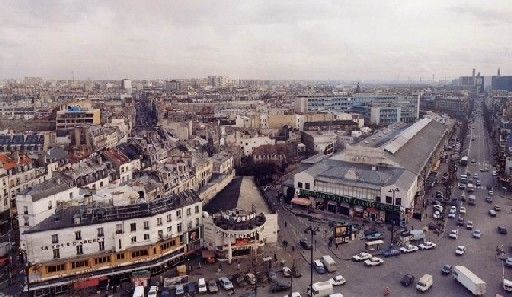 Some of the tracks behind the station were dismantled immediately, but the station itself remained for quite some time. I never went inside, but when I moved to Paris, it still regularly hosted antique fairs and dog shows and events in a similar vein. I thought the building was totally ugly with its (now) 1950’s type façade slowly crumbling away. I’m sure I wasn’t the only one who didn’t mind when it was finally torn down in 1984 to be replaced by President Mitterrand’s new opera.
Some of the tracks behind the station were dismantled immediately, but the station itself remained for quite some time. I never went inside, but when I moved to Paris, it still regularly hosted antique fairs and dog shows and events in a similar vein. I thought the building was totally ugly with its (now) 1950’s type façade slowly crumbling away. I’m sure I wasn’t the only one who didn’t mind when it was finally torn down in 1984 to be replaced by President Mitterrand’s new opera.
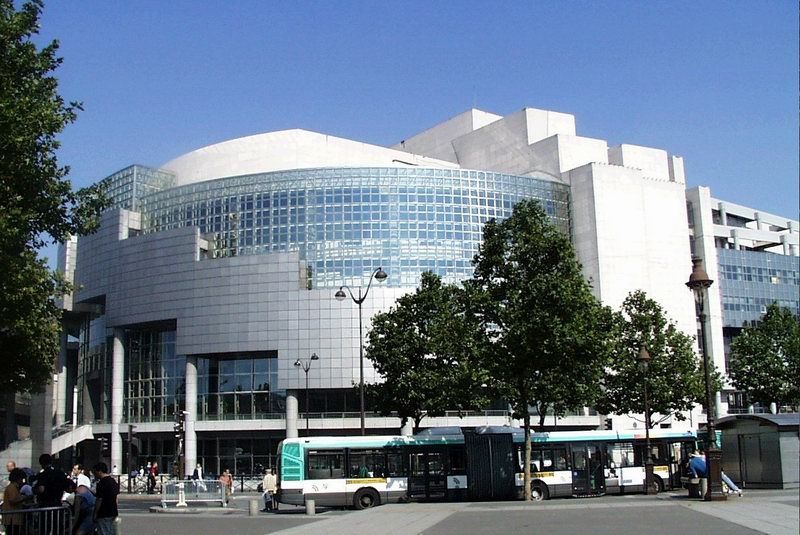
People have still not digested the style of the “new” building, but it isn’t entirely Mitterrand’s fault. Before it was completed, his socialist government was voted out of power, and the new people absolutely hated the building, but it was too late to stop it completely. So they just reduced the budget to make it cheaper and yes, now it has some netting over certain areas because it is falling apart.
Okay, who cares? This is not about the opera; this thread is about the Promenade Plantée which was created behind the opera. The first name given to the project was La Coulée Verte (“the green flow”), and one of the thoroughly valid justifications was that there was not much of interest in the 12th arrondissement and this could revitalize the area. Also there was the “problem” of the viaduct. The first part of the old rail line consisted of 72 brick arches more than a kilometer long, and just like in London and a lot of other cities, the arches were occupied by garages, cafés, shops and all sorts of things including apartments. It was all in pretty terrible condition, but evicting the 72+ tenants and destroying everything would have been a nightmare. So the idea was to renovate the viaduct and put a long skinny park on top where the rails used to be, all the way to the city limits.
And so here is the entrance to the Promenade Plantée at the Bastille end.

All along the way, there are various places (including elevators) to join or leave the “flow” and it is a very popular place for people to stroll or jog. There is no room for bikes for the first third of the way, but that is remedied for the rest of the promenade, which is more than 4 kilometers long in all.
I’ve been there a few times when I thought it was a little too crowded, but this was a holiday afternoon when I was expecting more people, and it was quite nice and relatively empty.
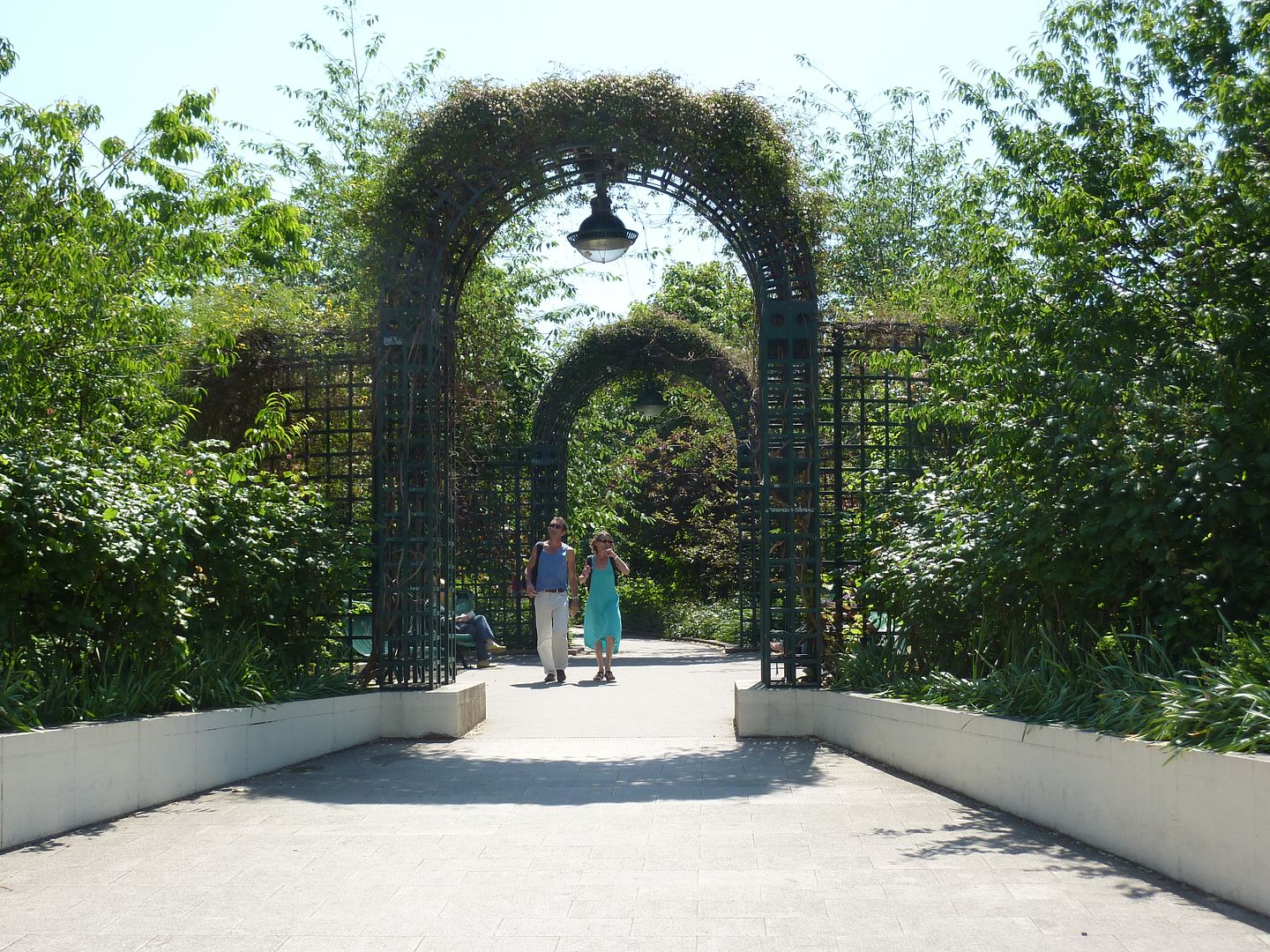

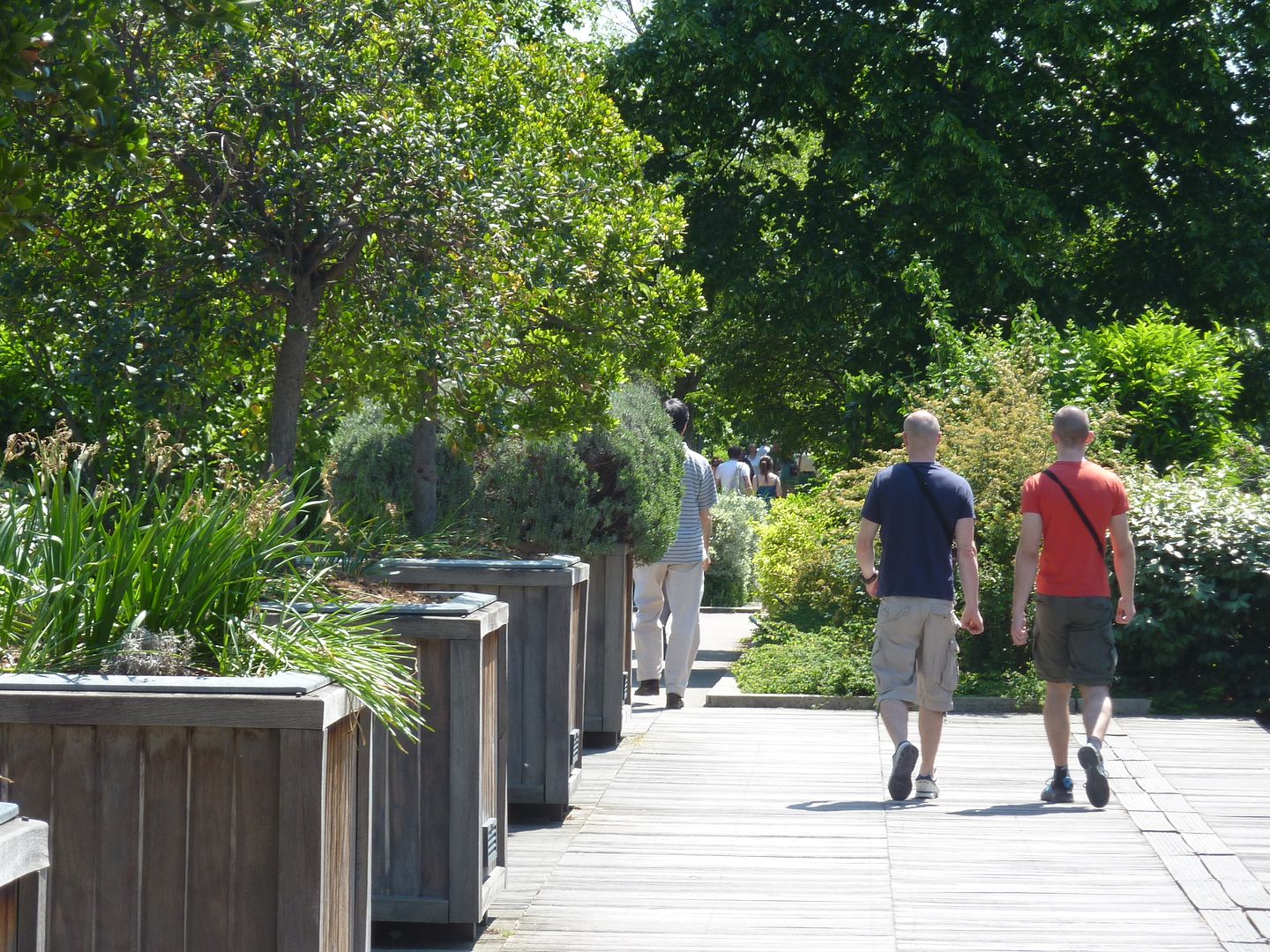

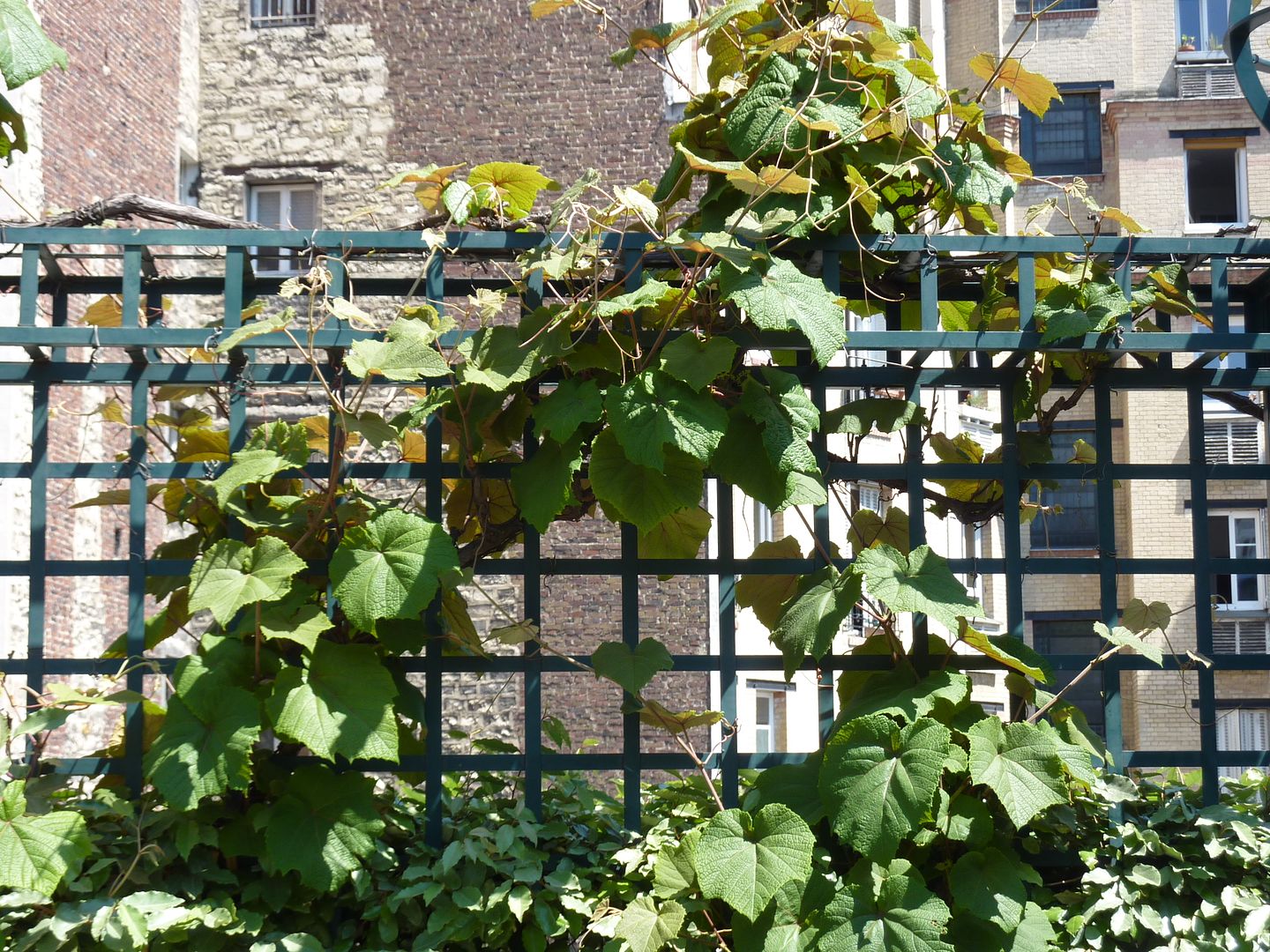


(end of part one)


I never saw the station open myself, although I could have as a little boy, because it remained in service until the RER A express metro line opened in 1969 and intercepted its suburban tracks. Amazingly enough, the Bastille line operated steam engines until the day it closed. Things used to be built to last, because the steam engines used on the line were built in 1913. How times have changed!


People have still not digested the style of the “new” building, but it isn’t entirely Mitterrand’s fault. Before it was completed, his socialist government was voted out of power, and the new people absolutely hated the building, but it was too late to stop it completely. So they just reduced the budget to make it cheaper and yes, now it has some netting over certain areas because it is falling apart.
Okay, who cares? This is not about the opera; this thread is about the Promenade Plantée which was created behind the opera. The first name given to the project was La Coulée Verte (“the green flow”), and one of the thoroughly valid justifications was that there was not much of interest in the 12th arrondissement and this could revitalize the area. Also there was the “problem” of the viaduct. The first part of the old rail line consisted of 72 brick arches more than a kilometer long, and just like in London and a lot of other cities, the arches were occupied by garages, cafés, shops and all sorts of things including apartments. It was all in pretty terrible condition, but evicting the 72+ tenants and destroying everything would have been a nightmare. So the idea was to renovate the viaduct and put a long skinny park on top where the rails used to be, all the way to the city limits.
And so here is the entrance to the Promenade Plantée at the Bastille end.

All along the way, there are various places (including elevators) to join or leave the “flow” and it is a very popular place for people to stroll or jog. There is no room for bikes for the first third of the way, but that is remedied for the rest of the promenade, which is more than 4 kilometers long in all.
I’ve been there a few times when I thought it was a little too crowded, but this was a holiday afternoon when I was expecting more people, and it was quite nice and relatively empty.







(end of part one)


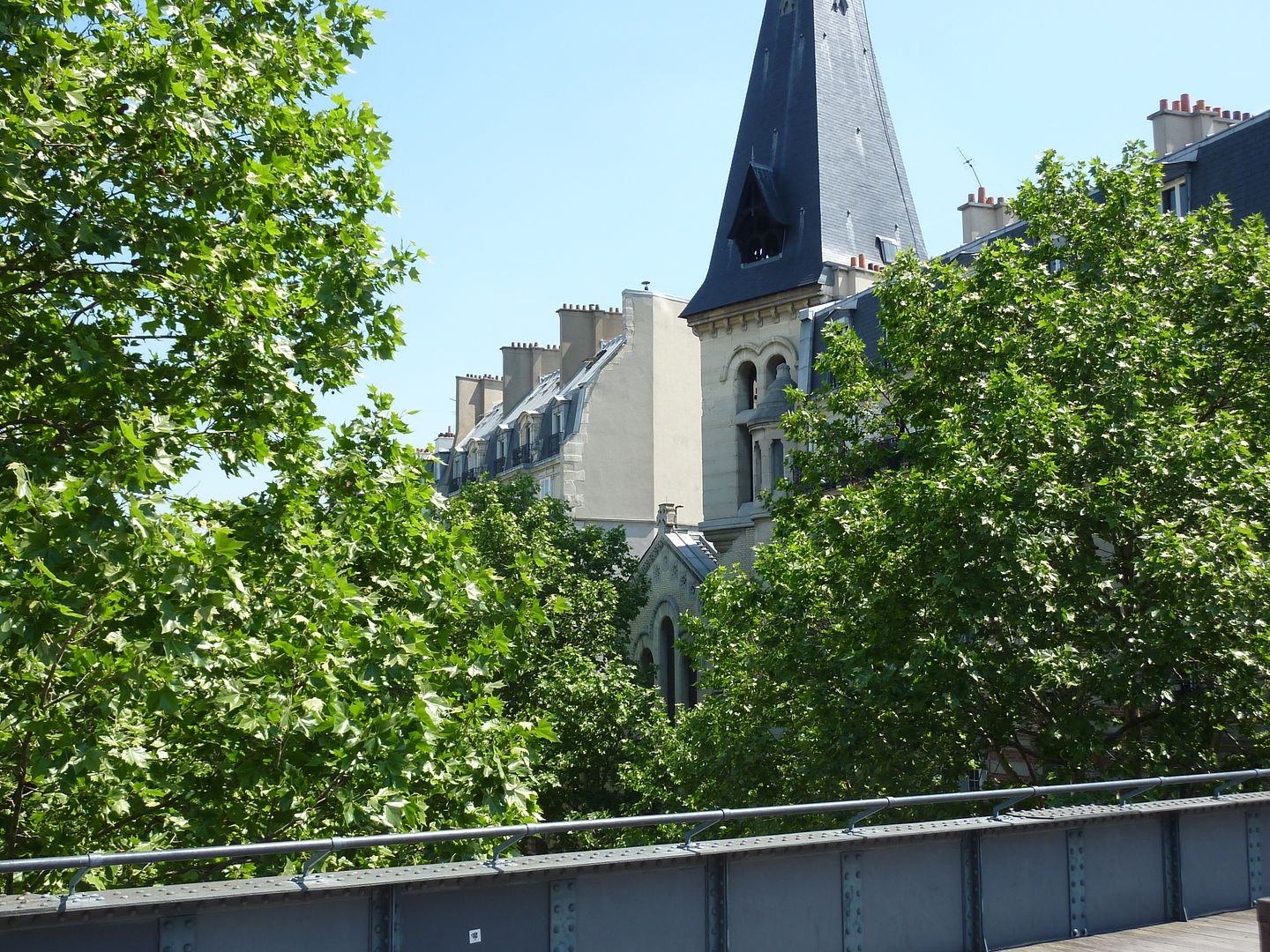
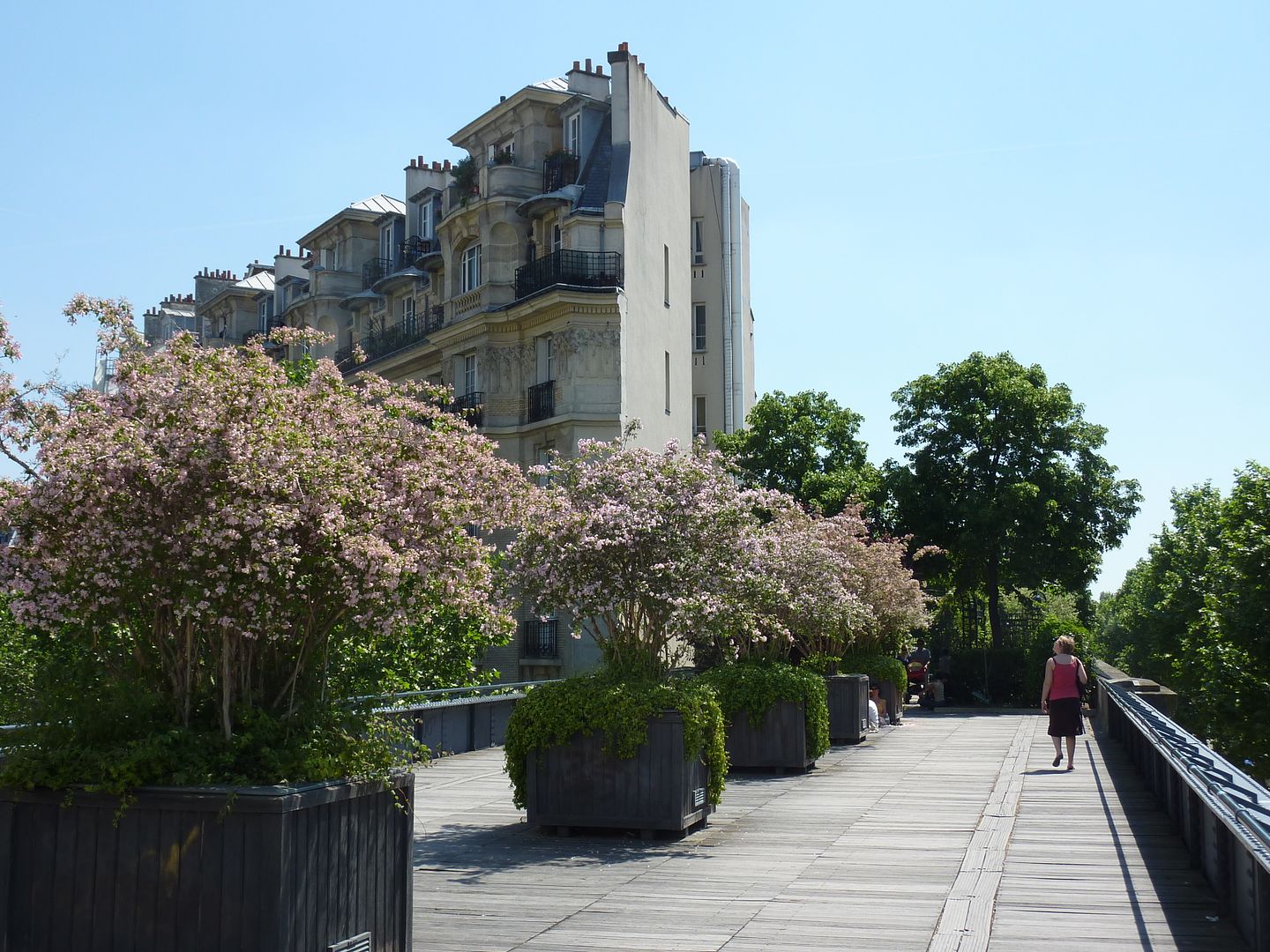

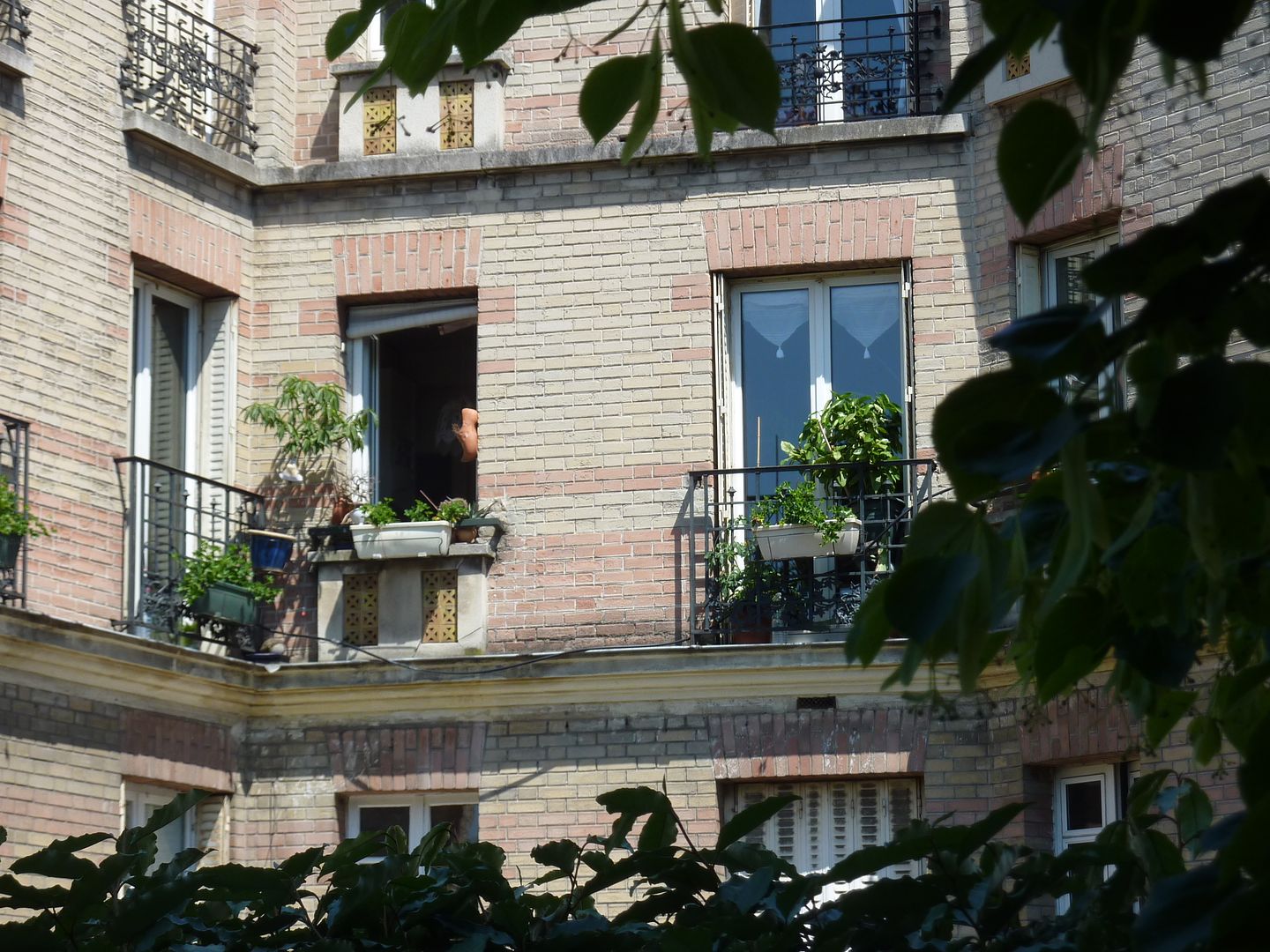
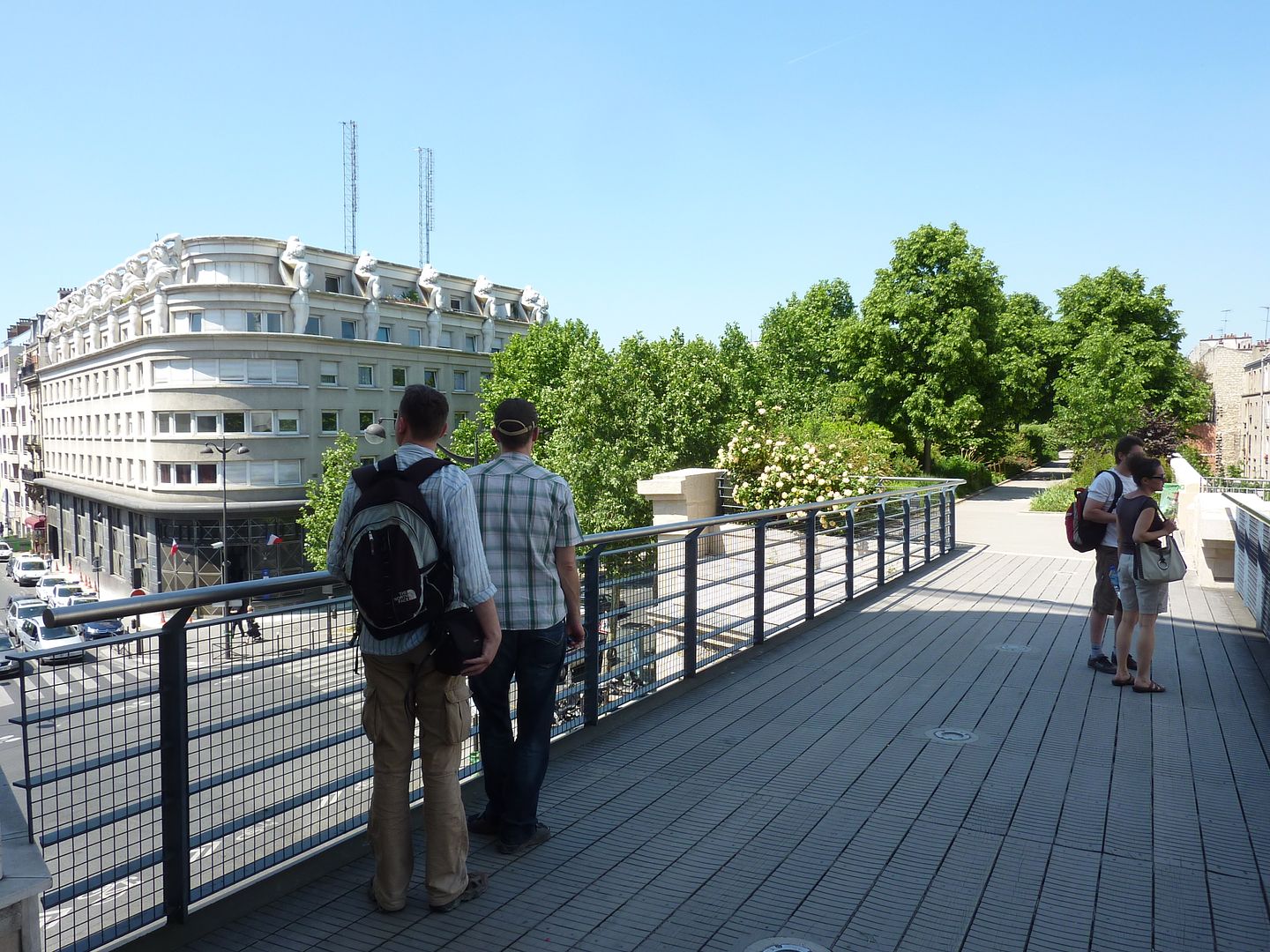
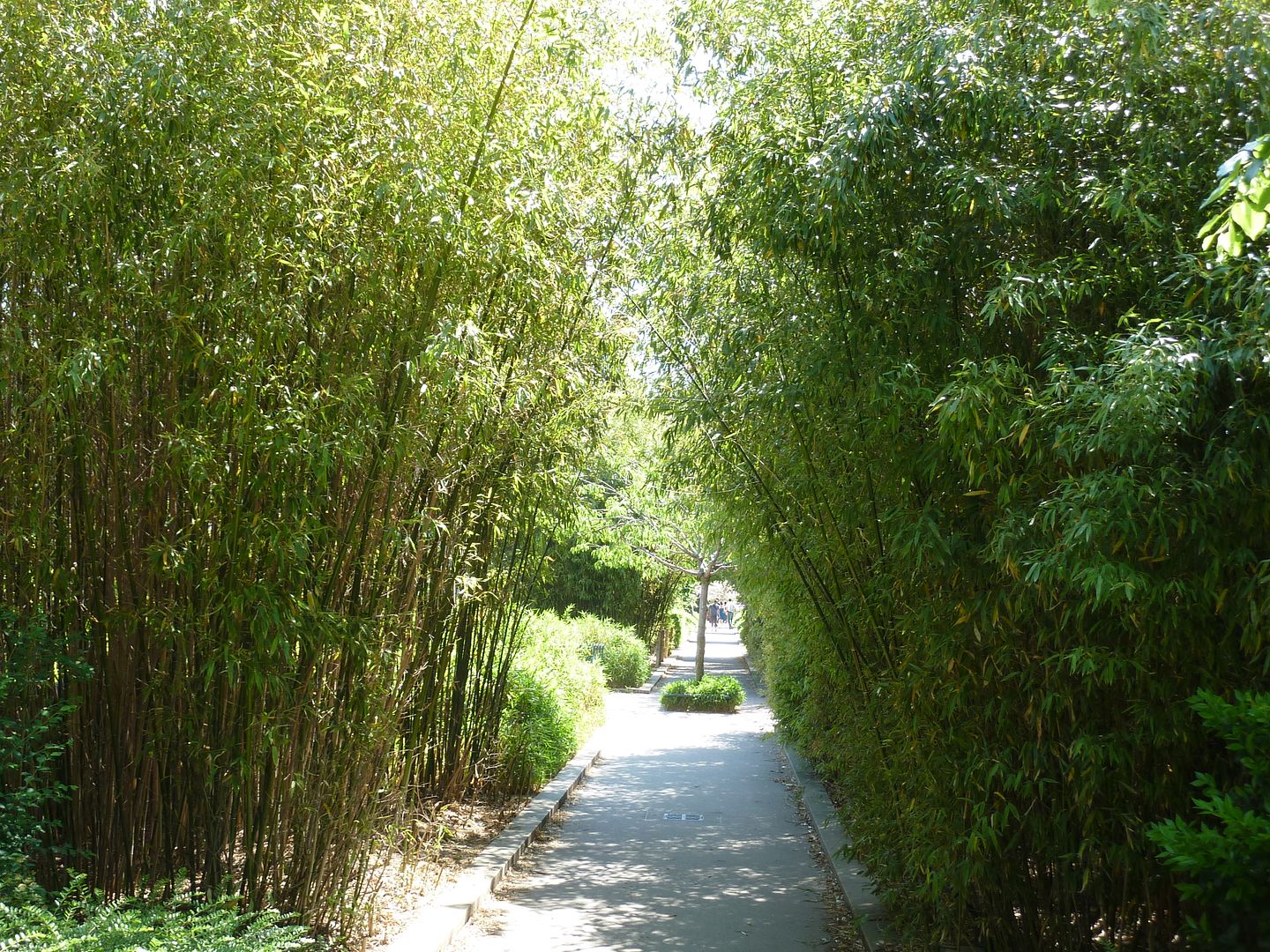
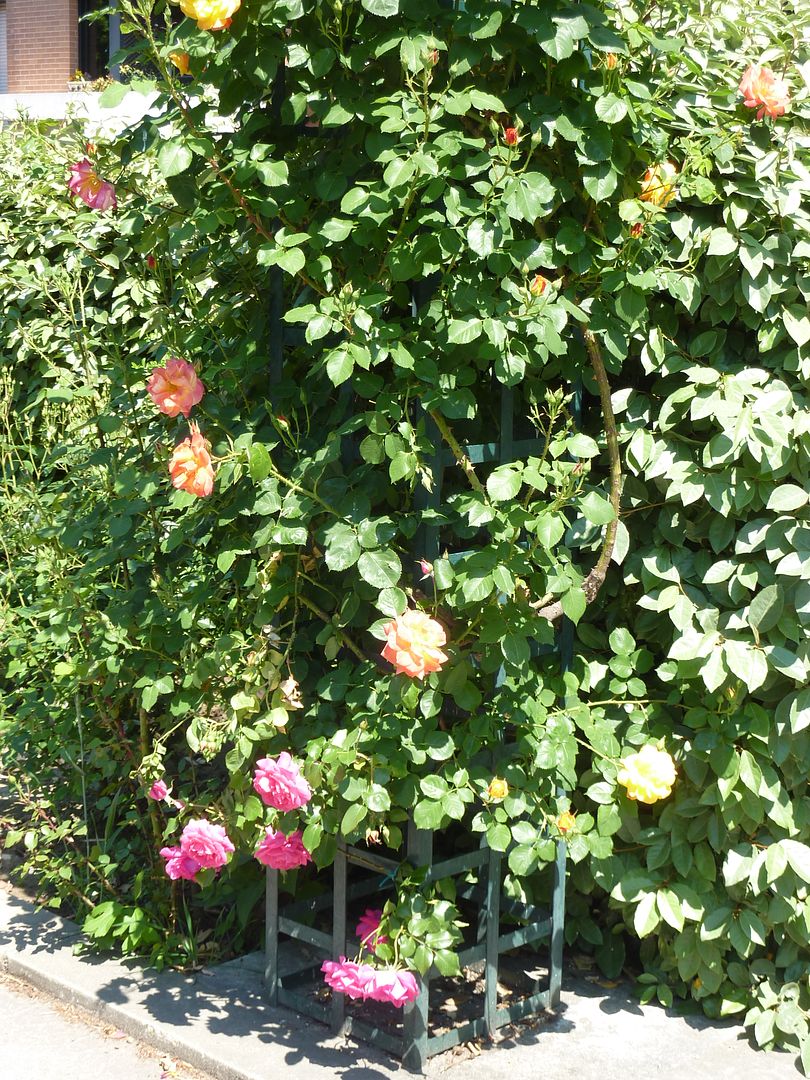
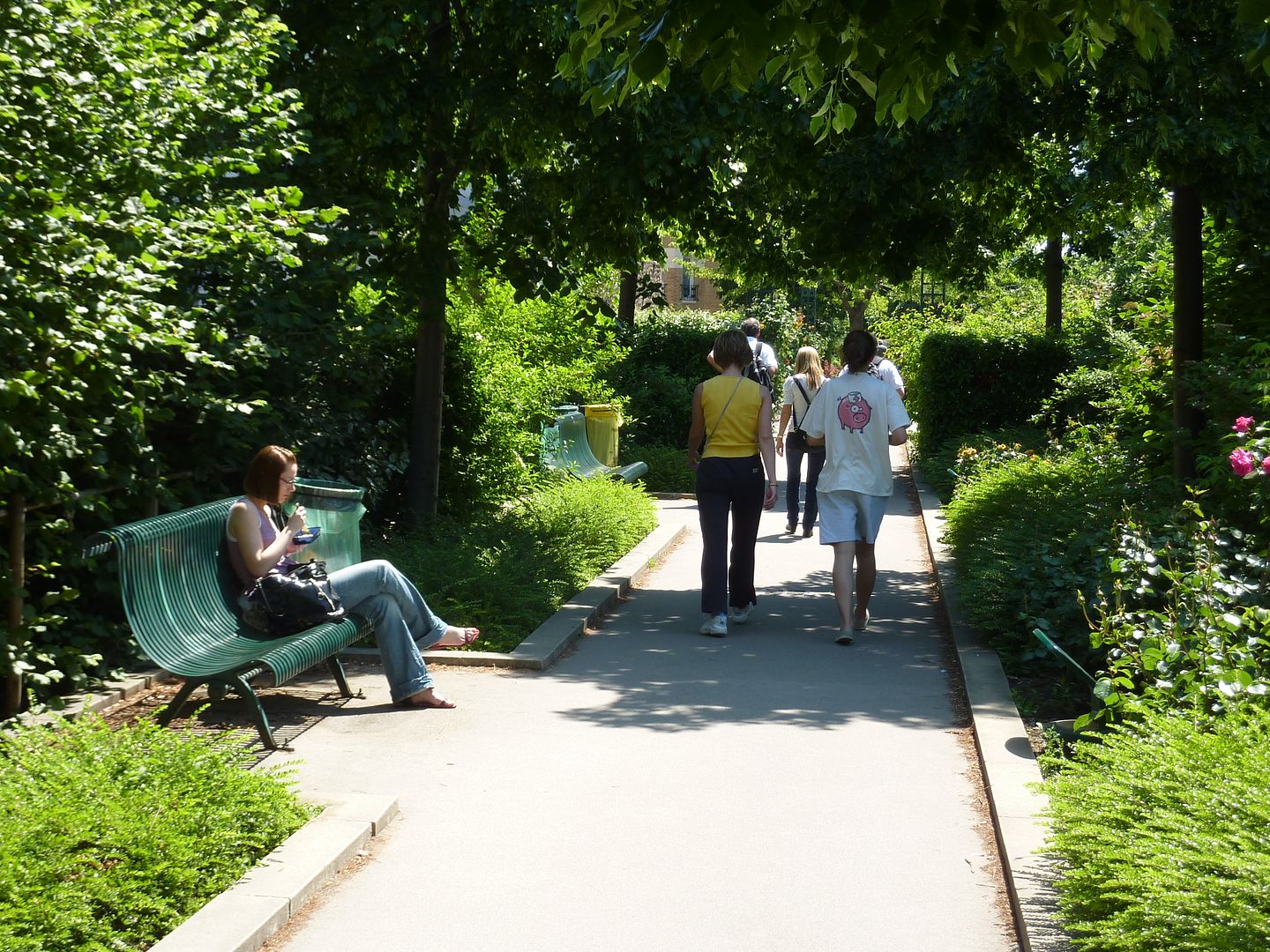
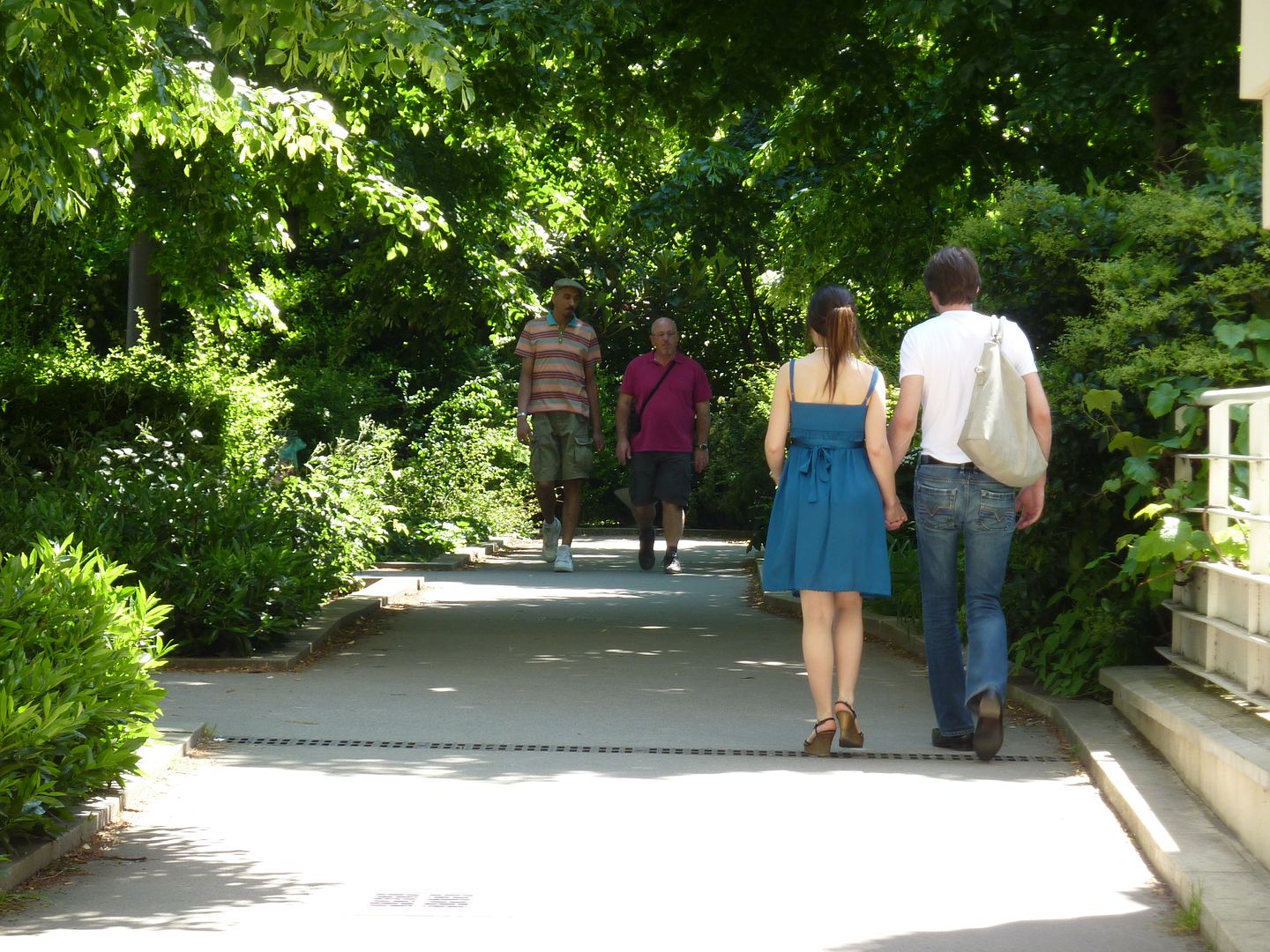


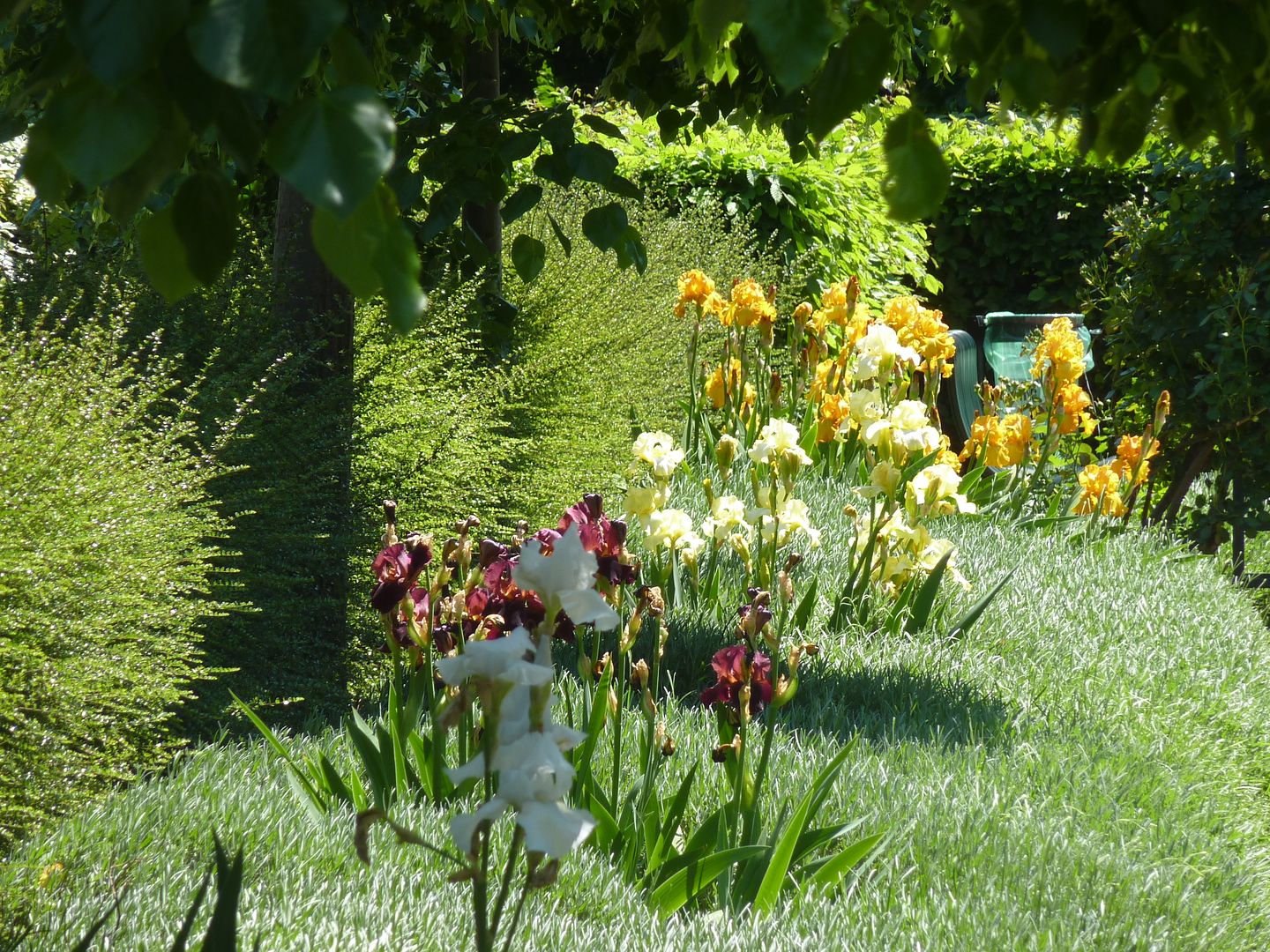
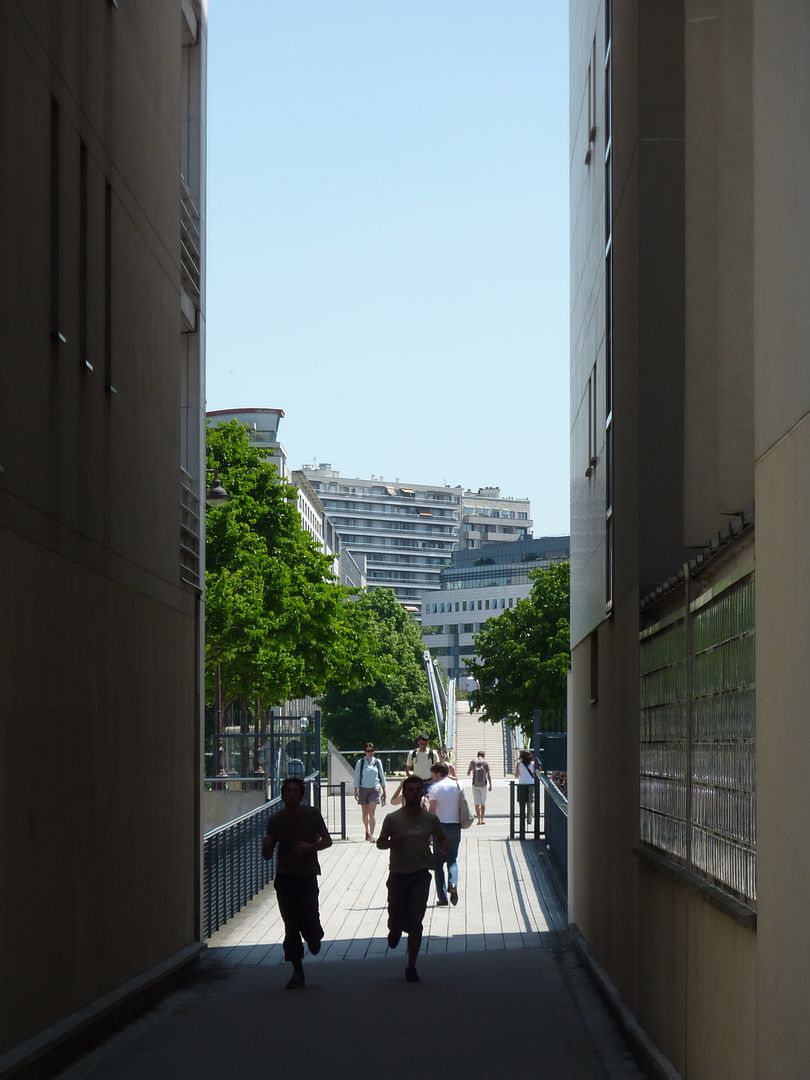
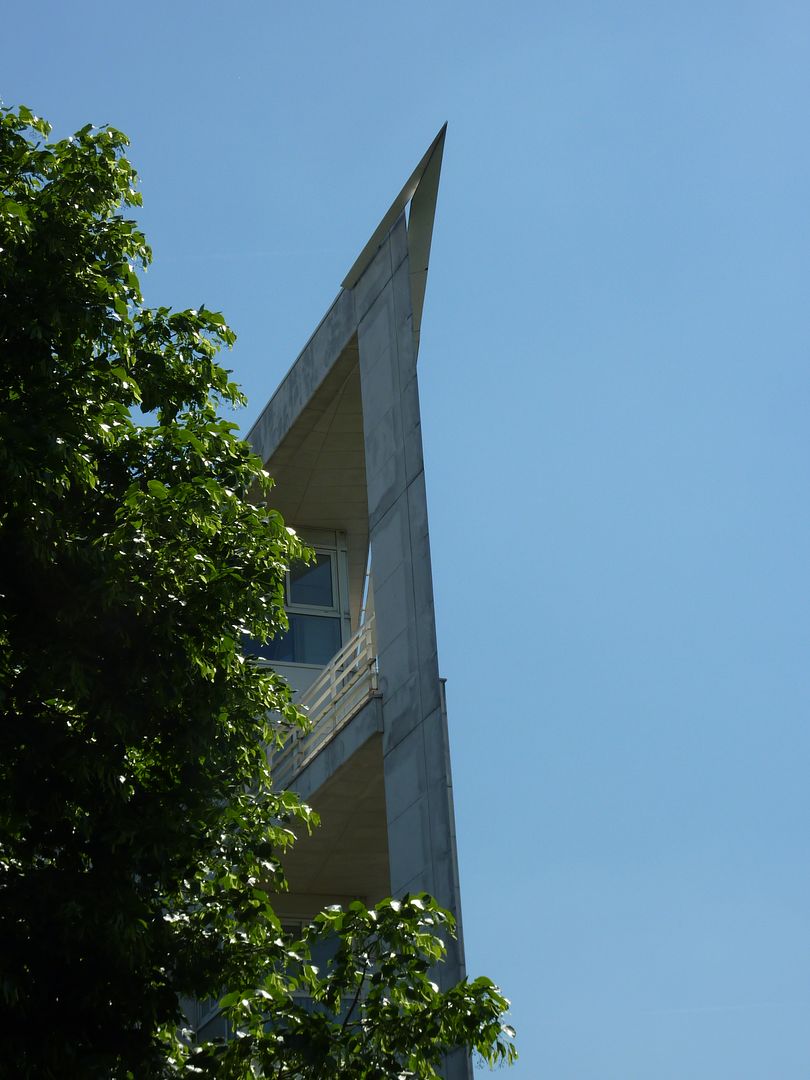
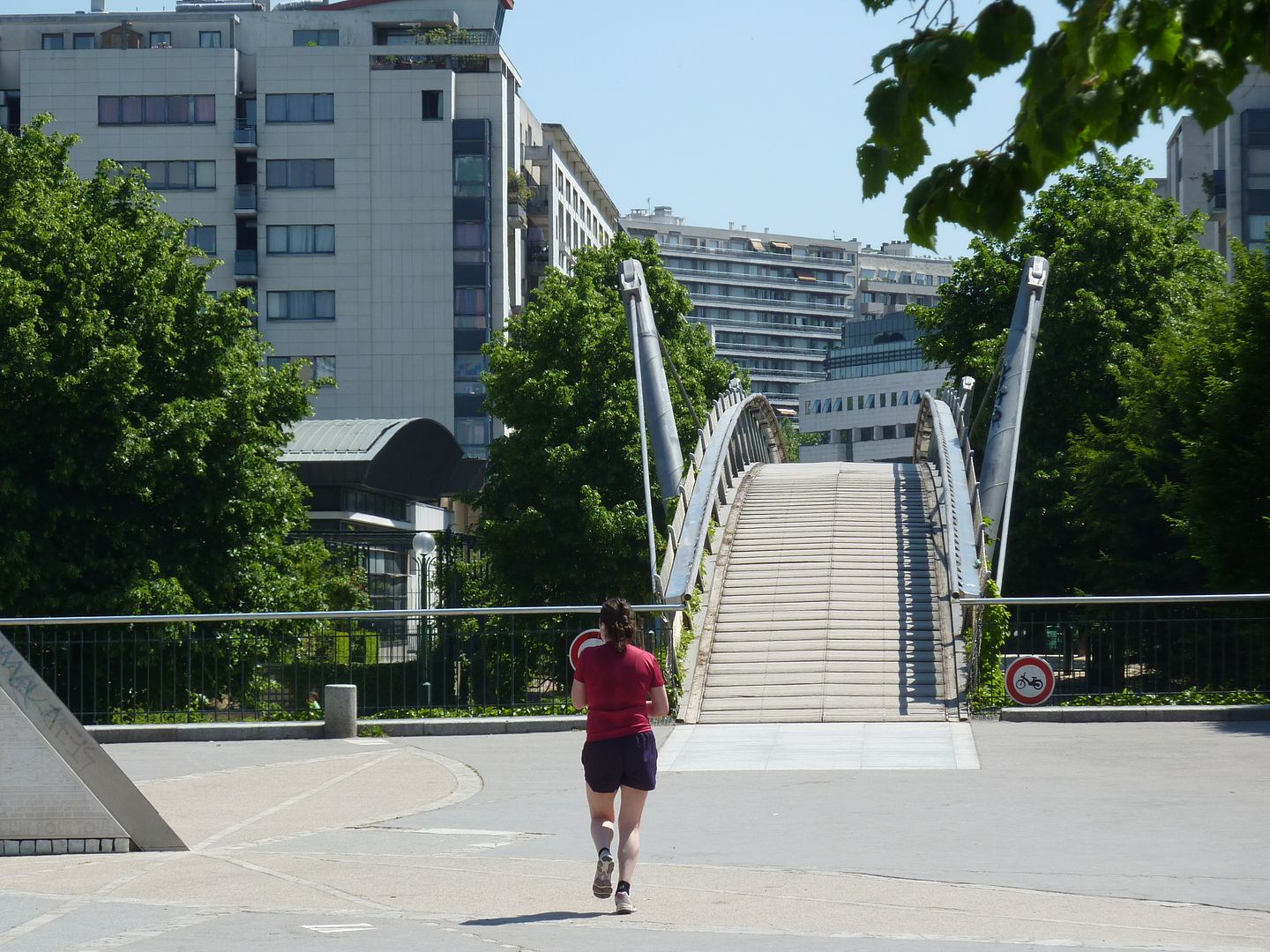

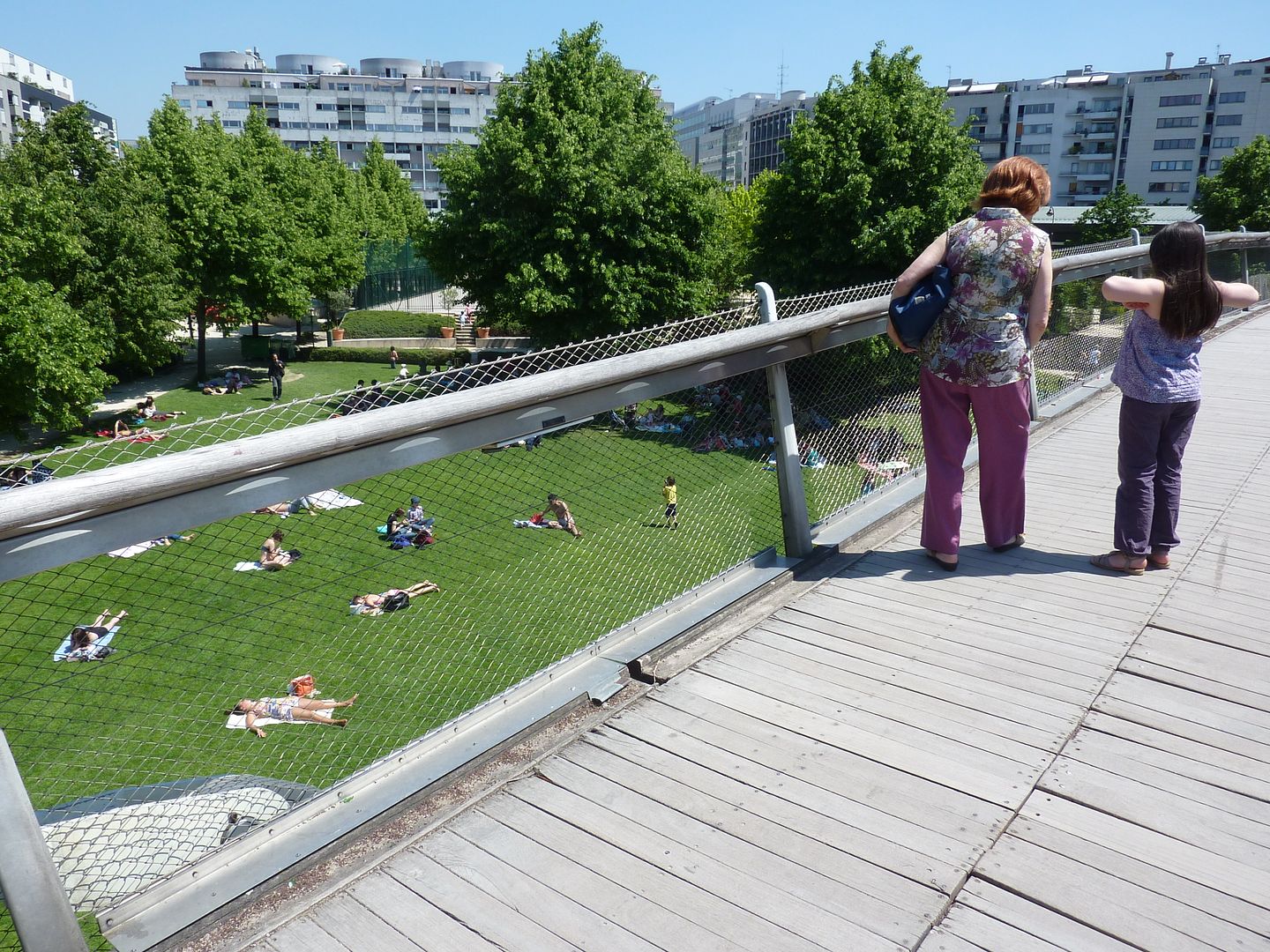
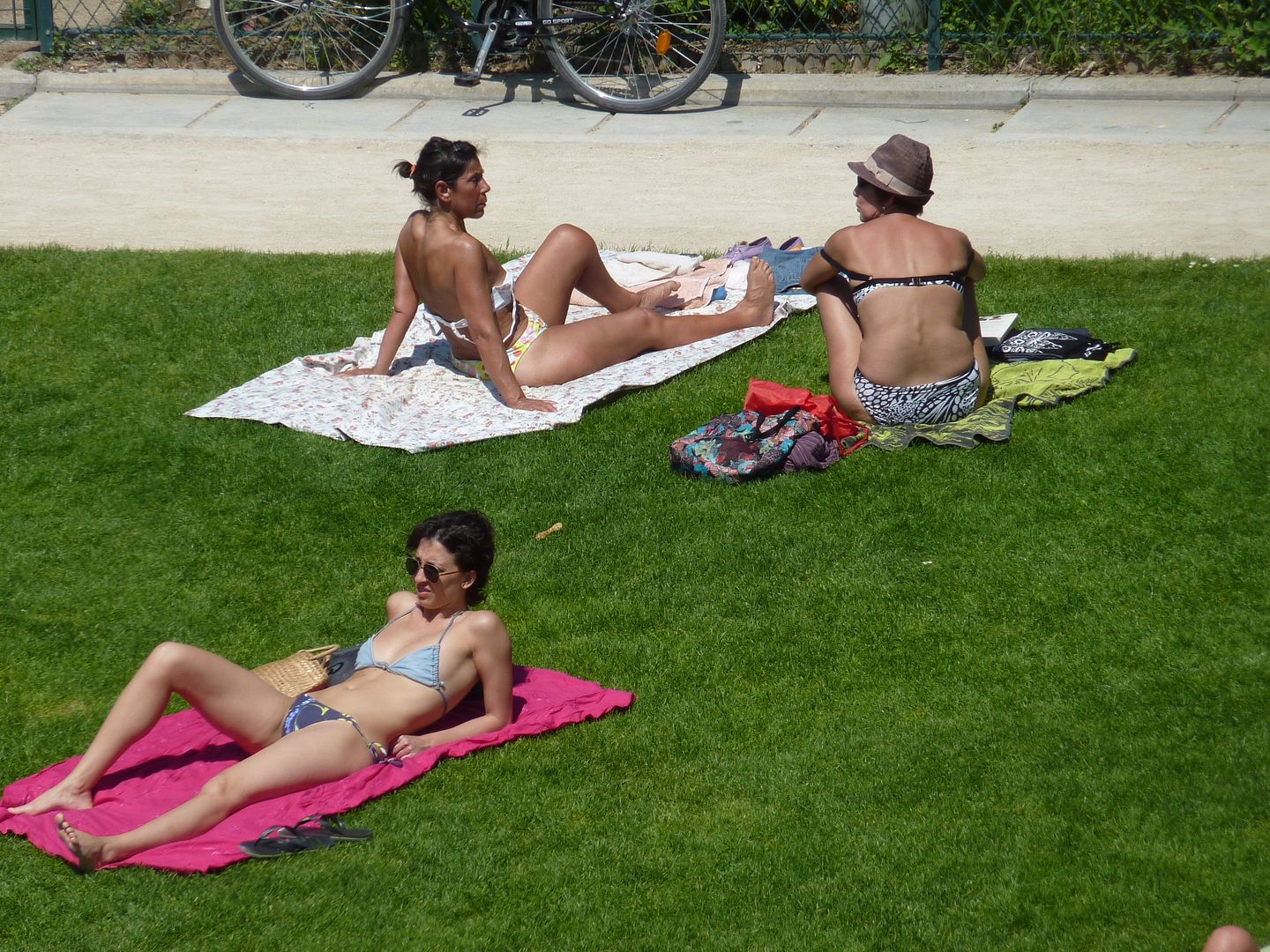
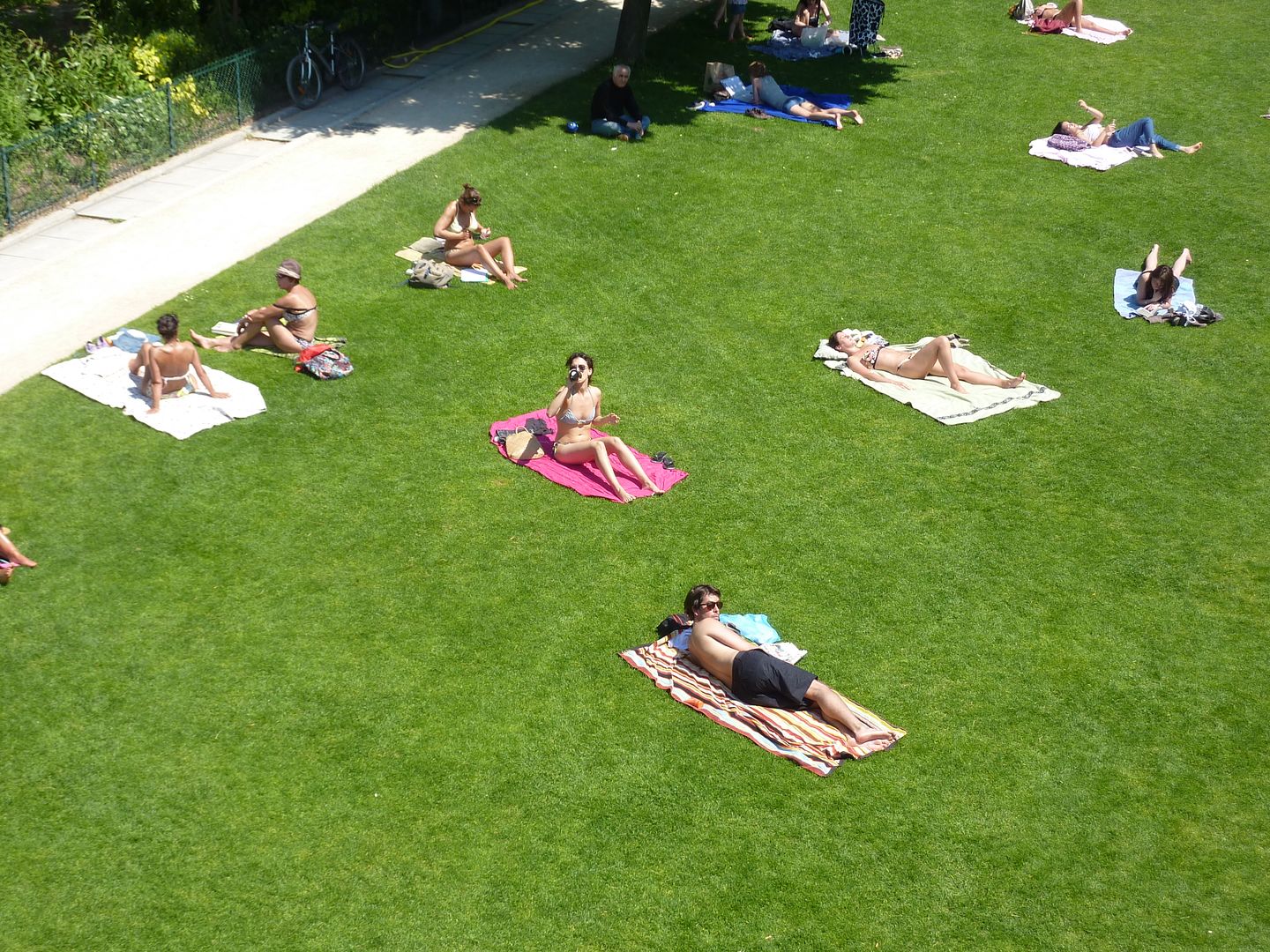
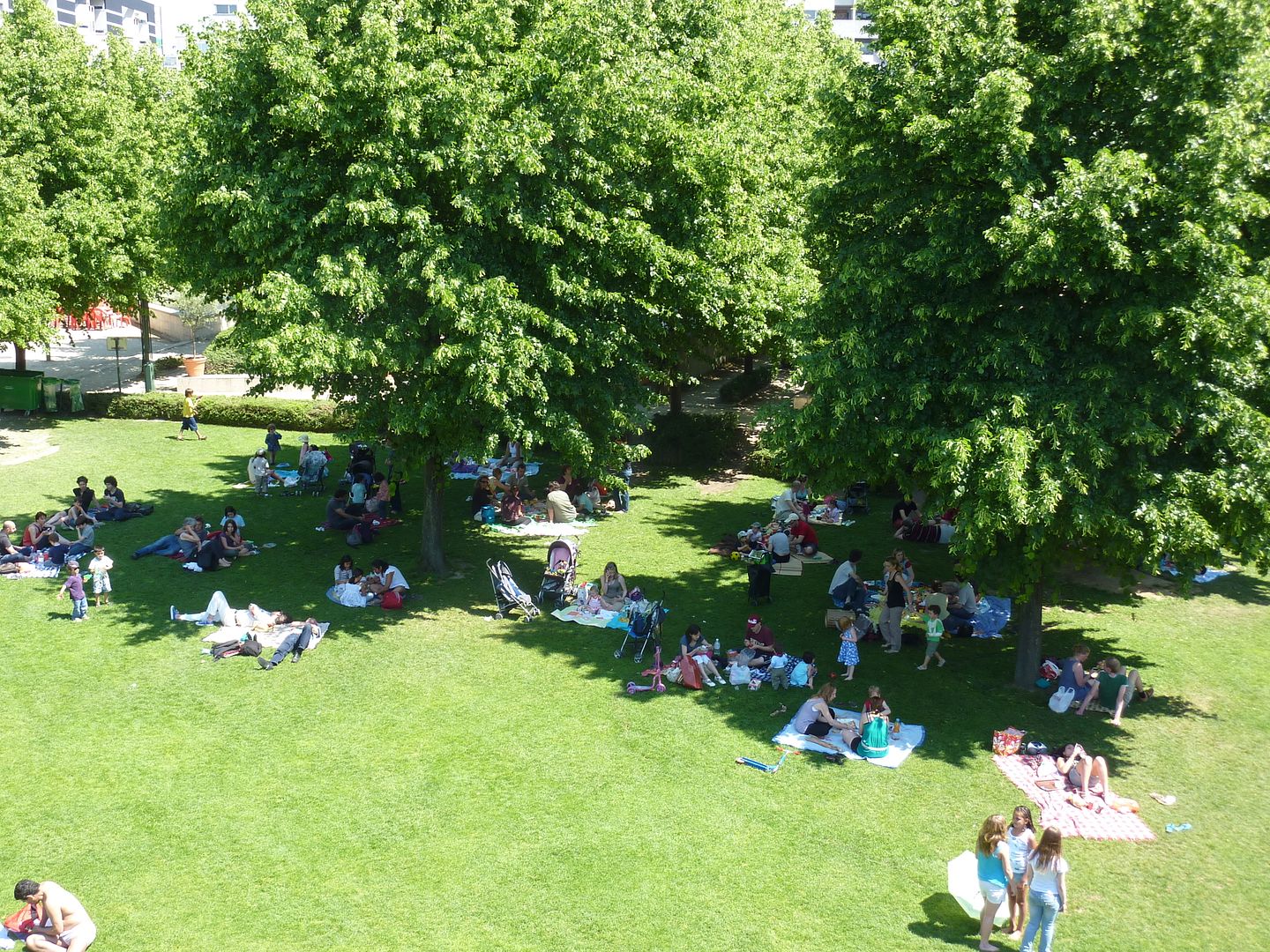

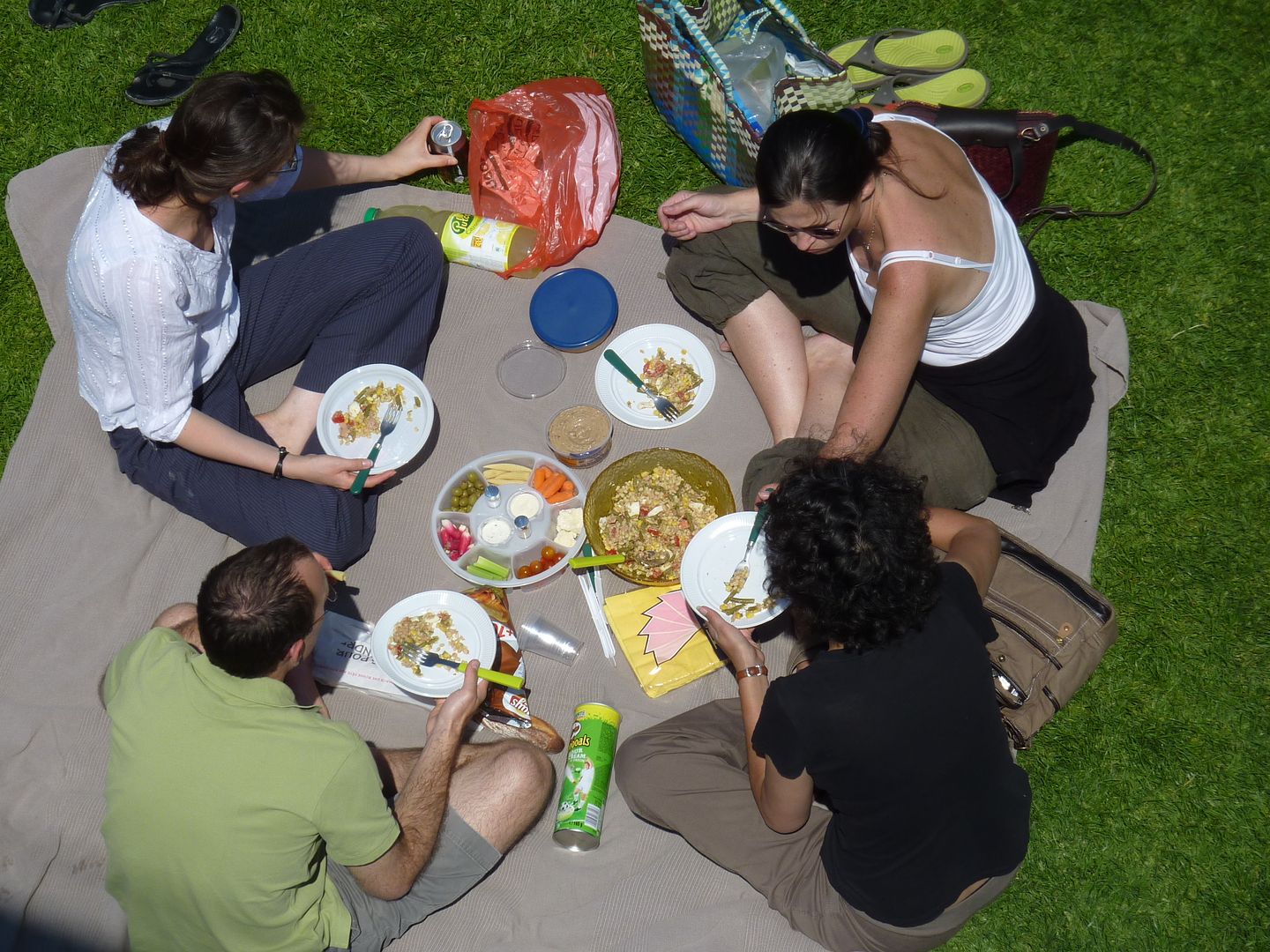
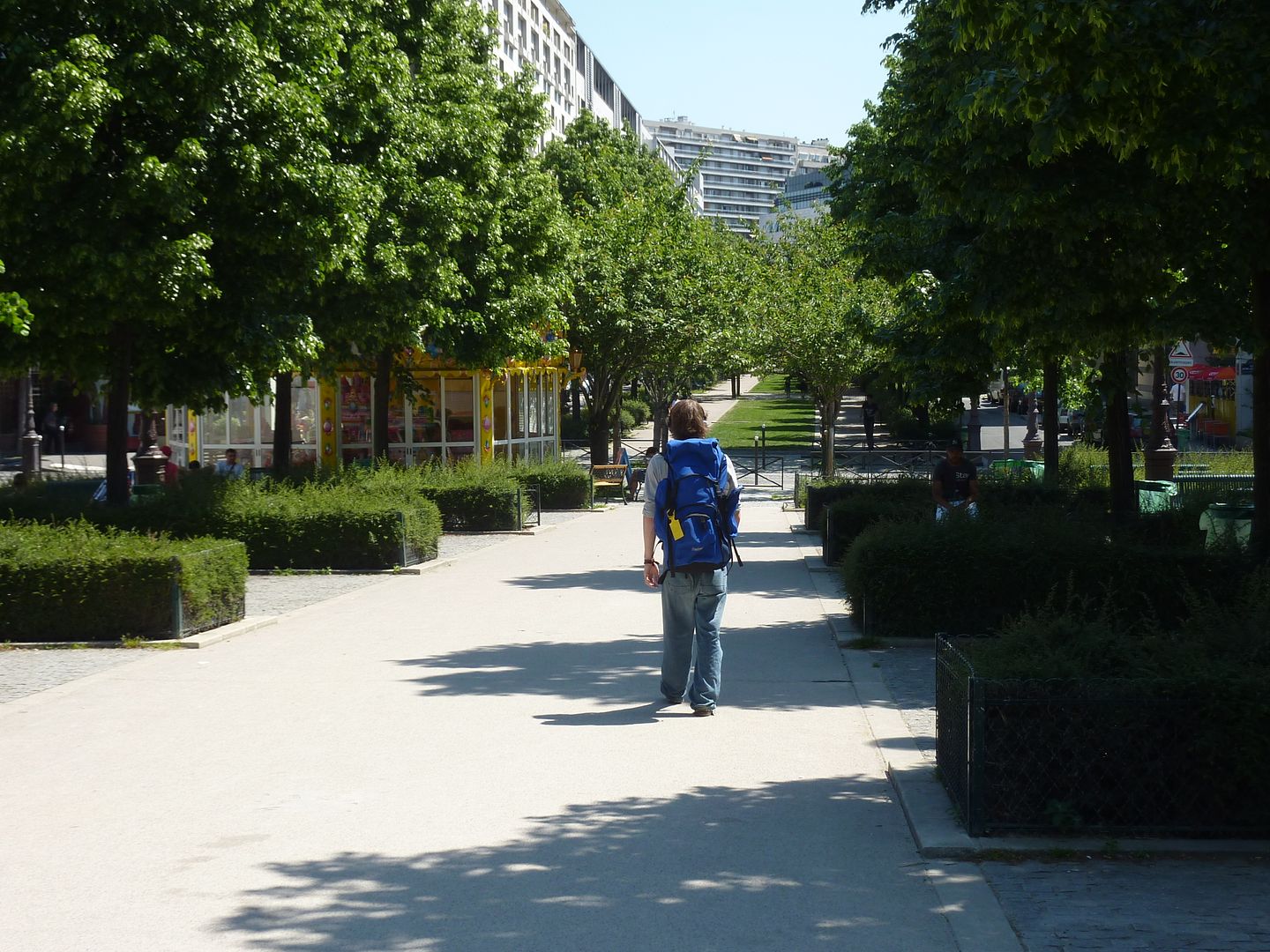
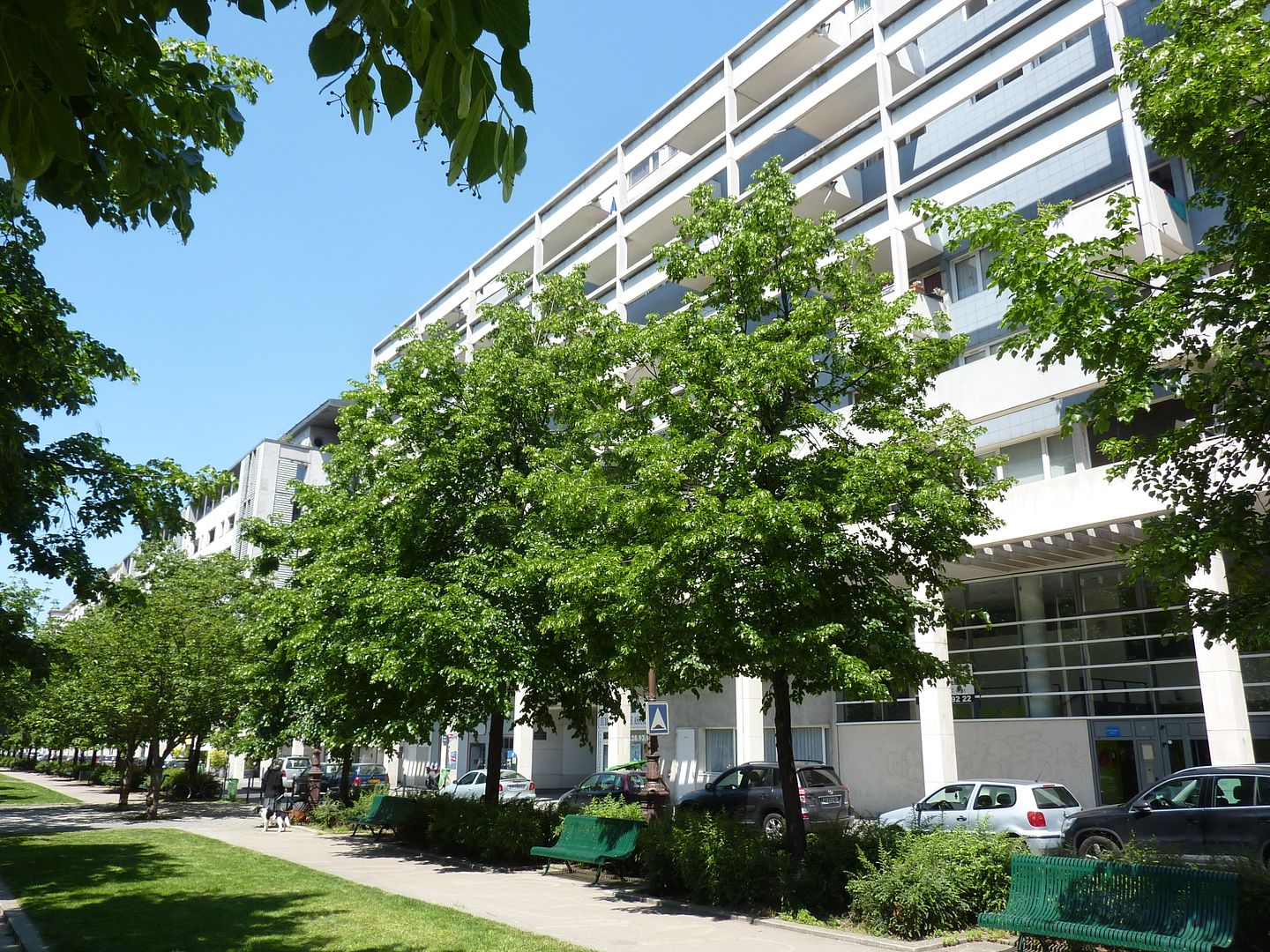
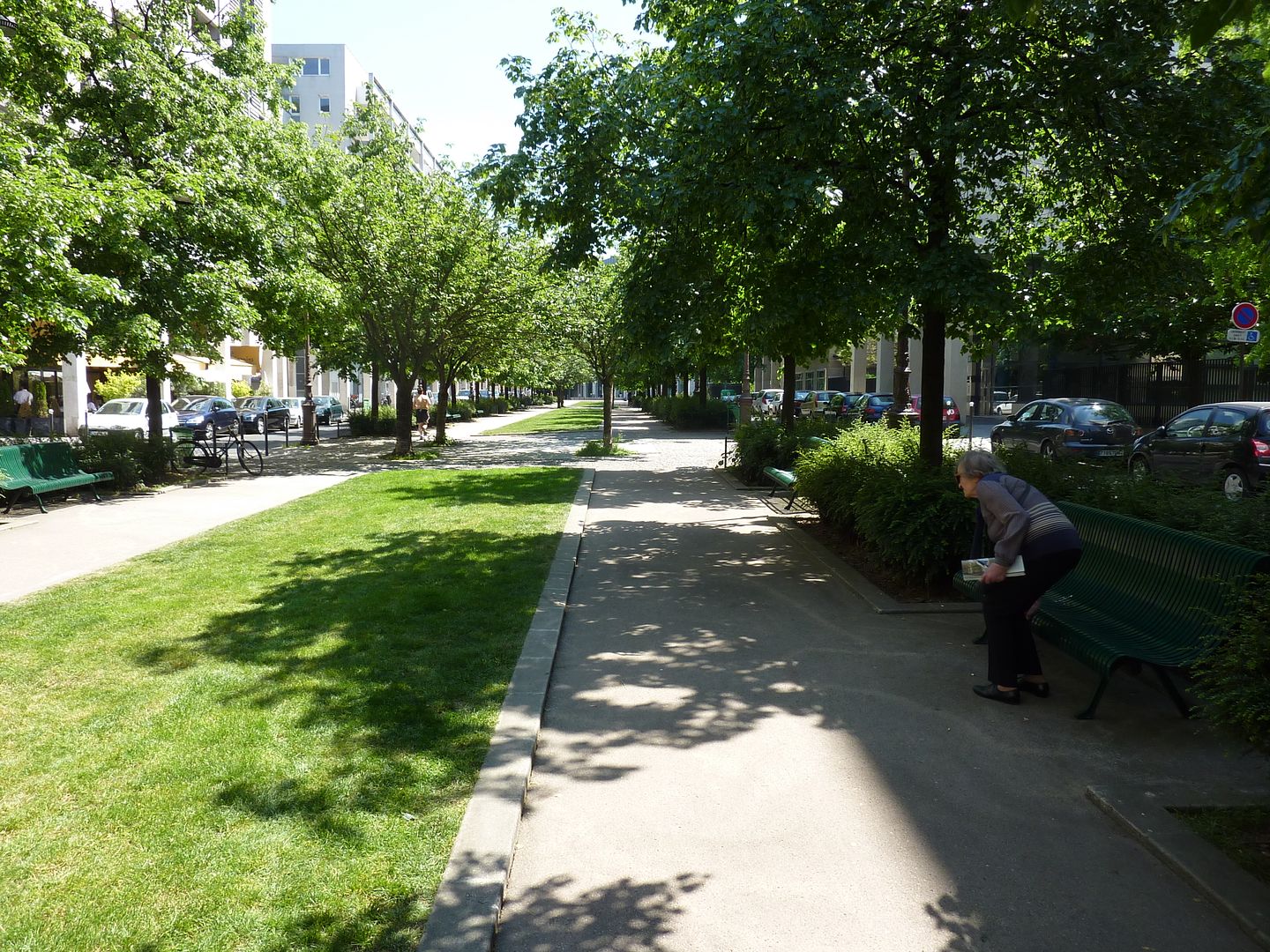
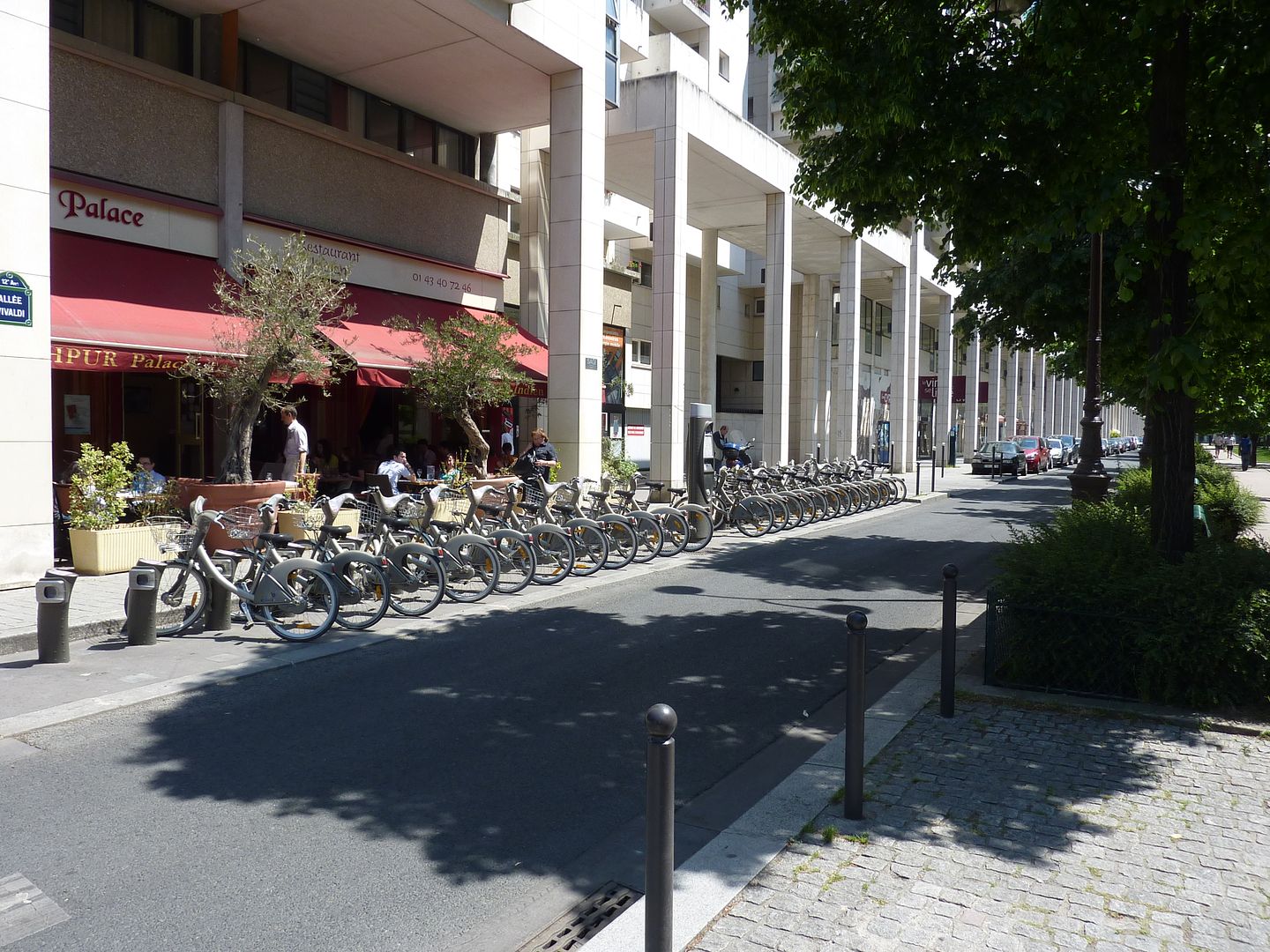
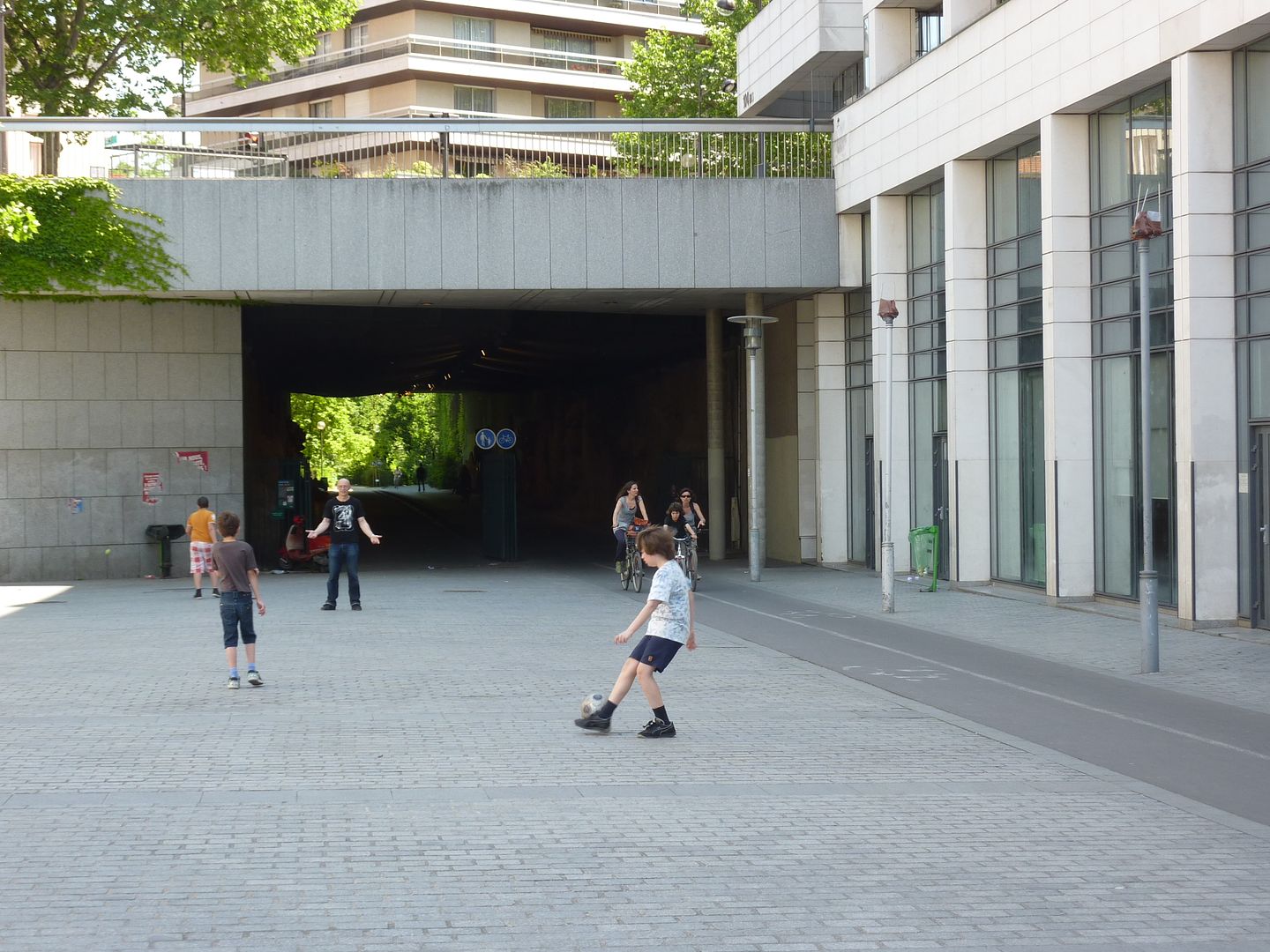
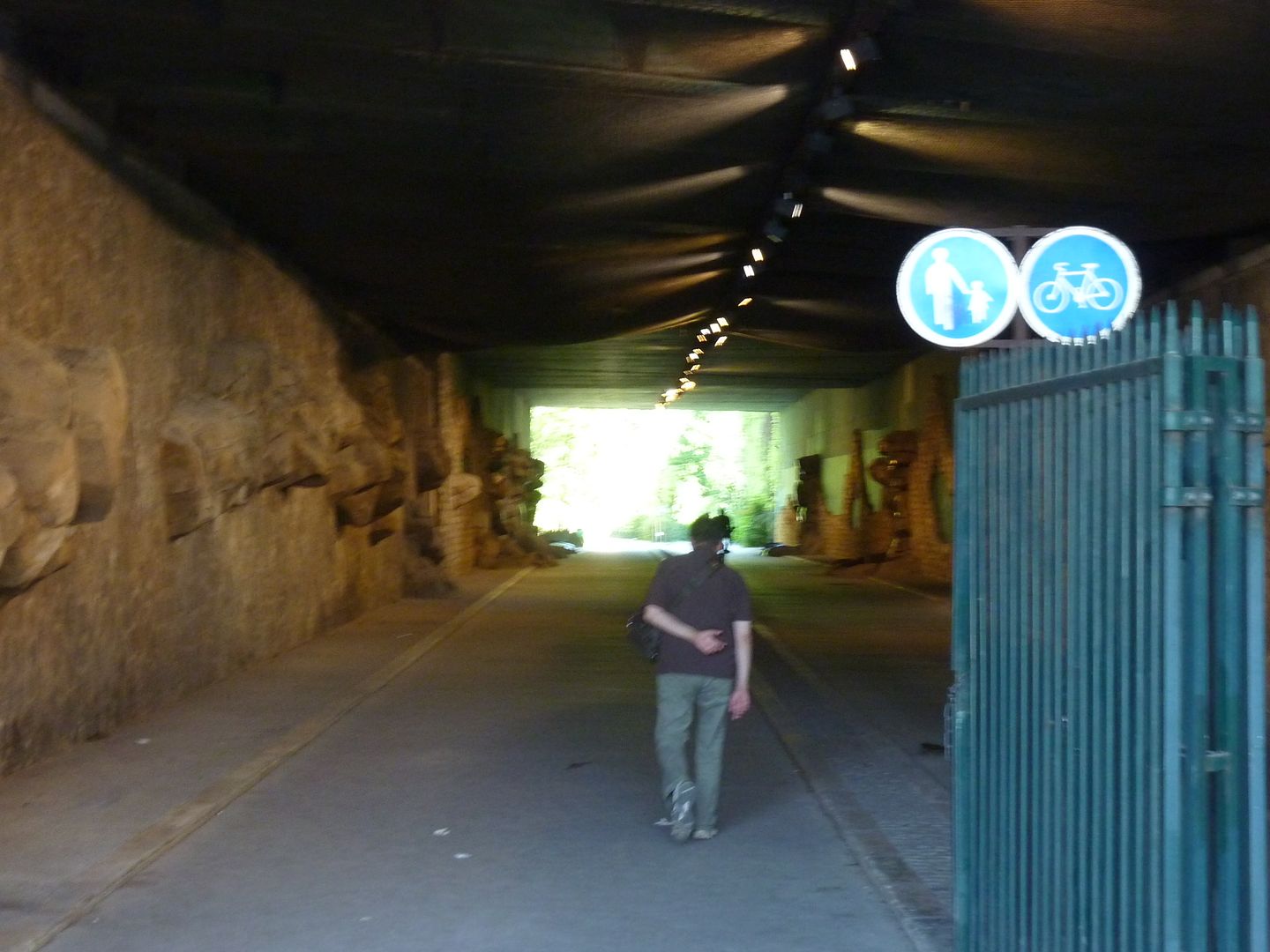
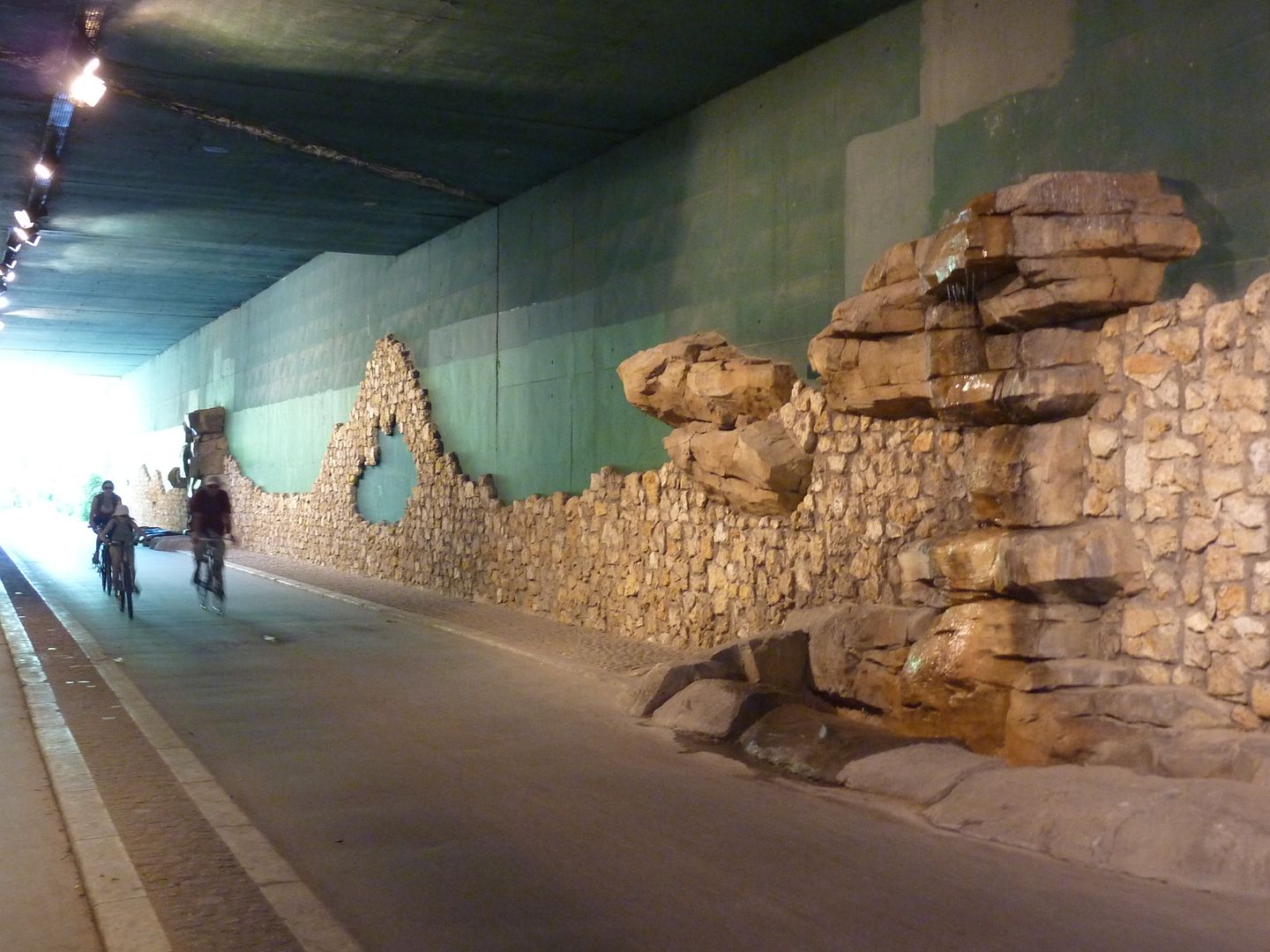
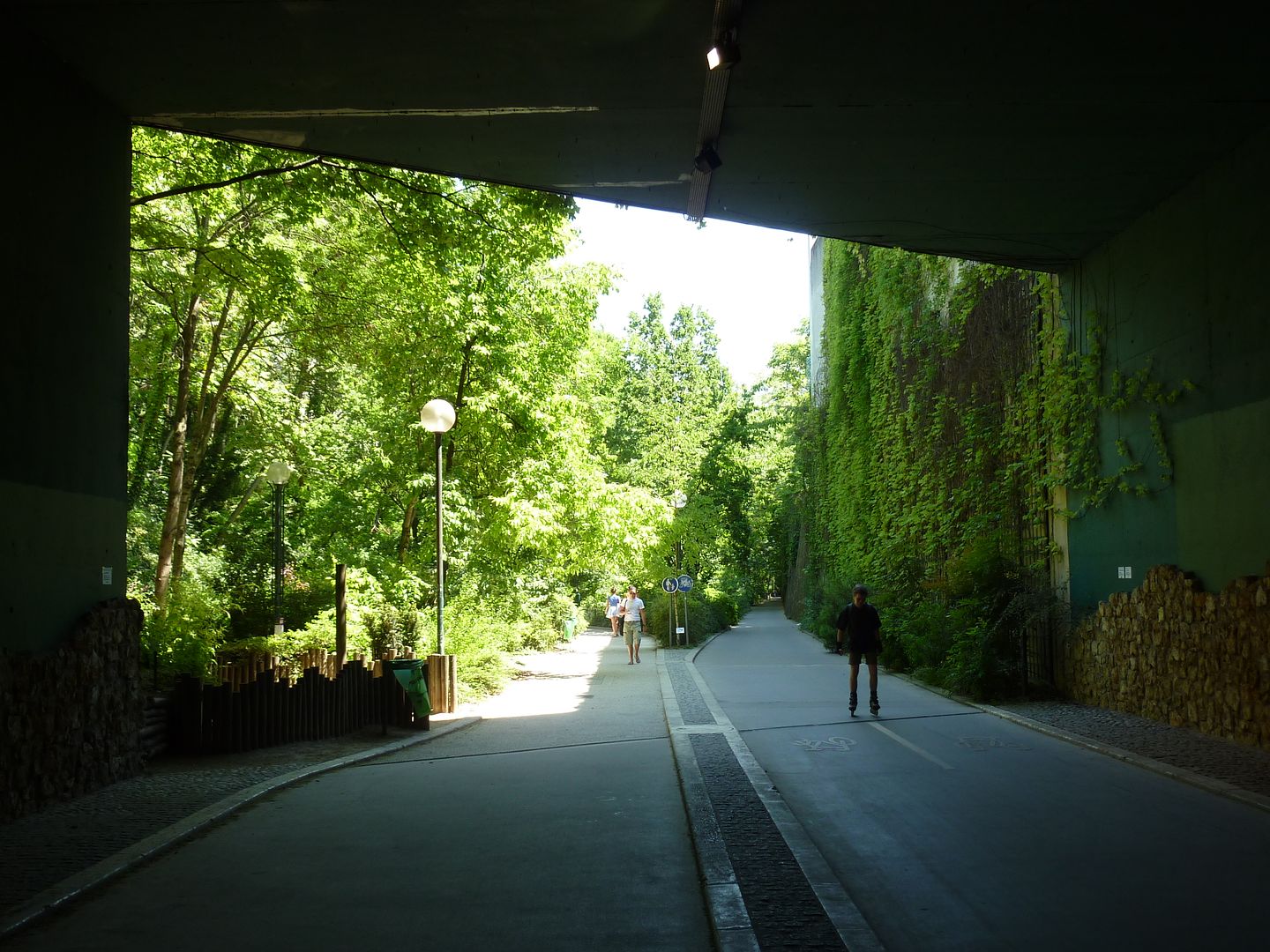
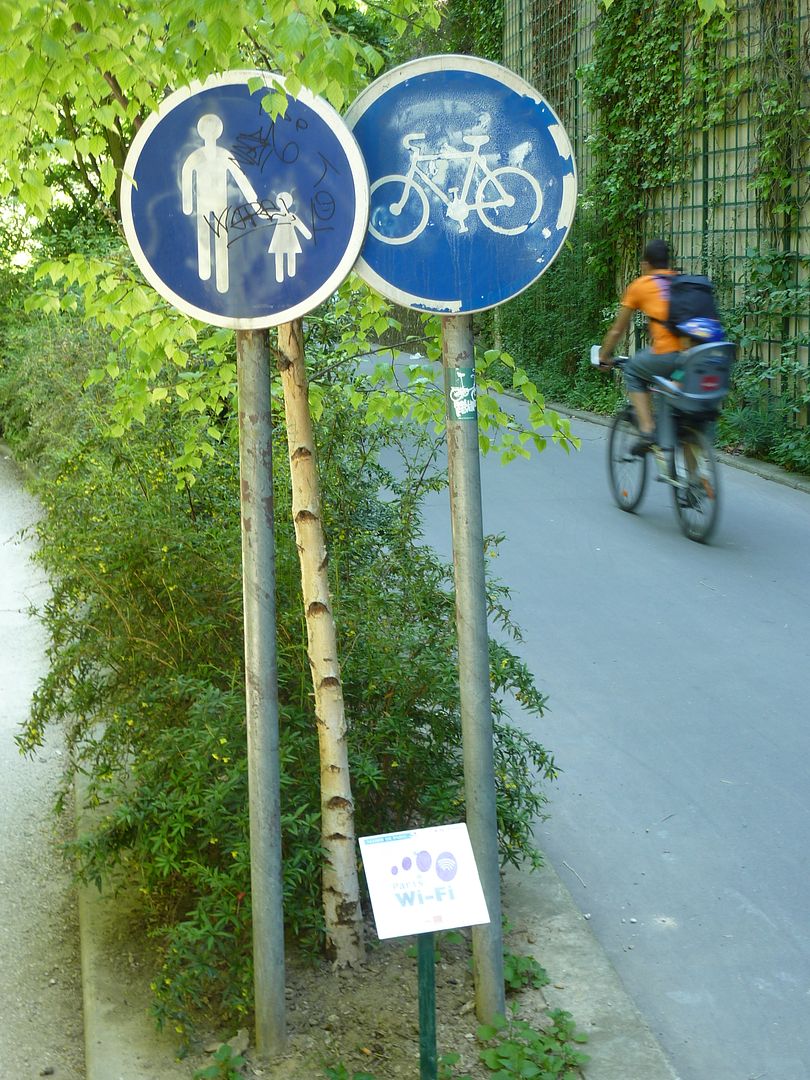
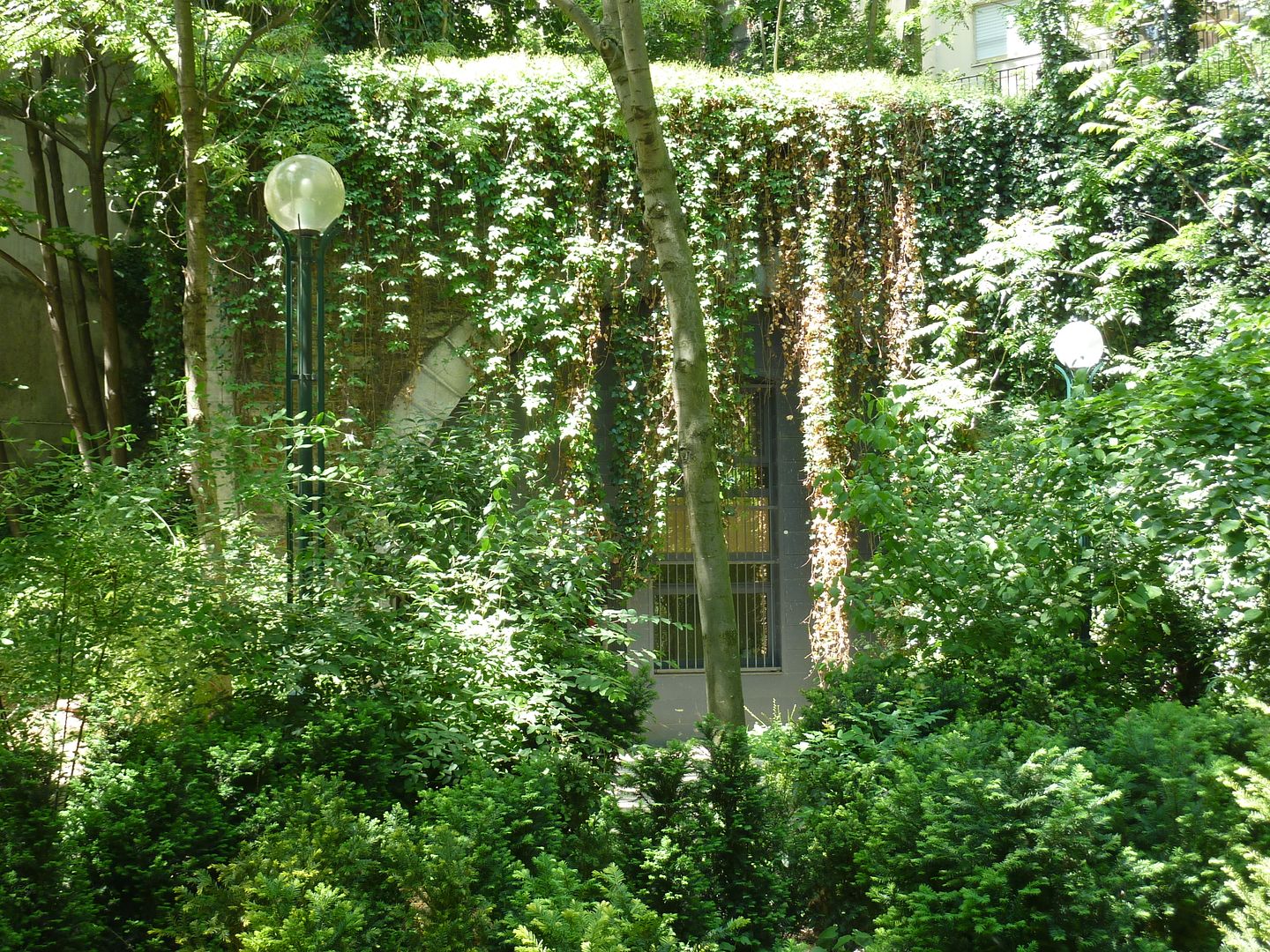



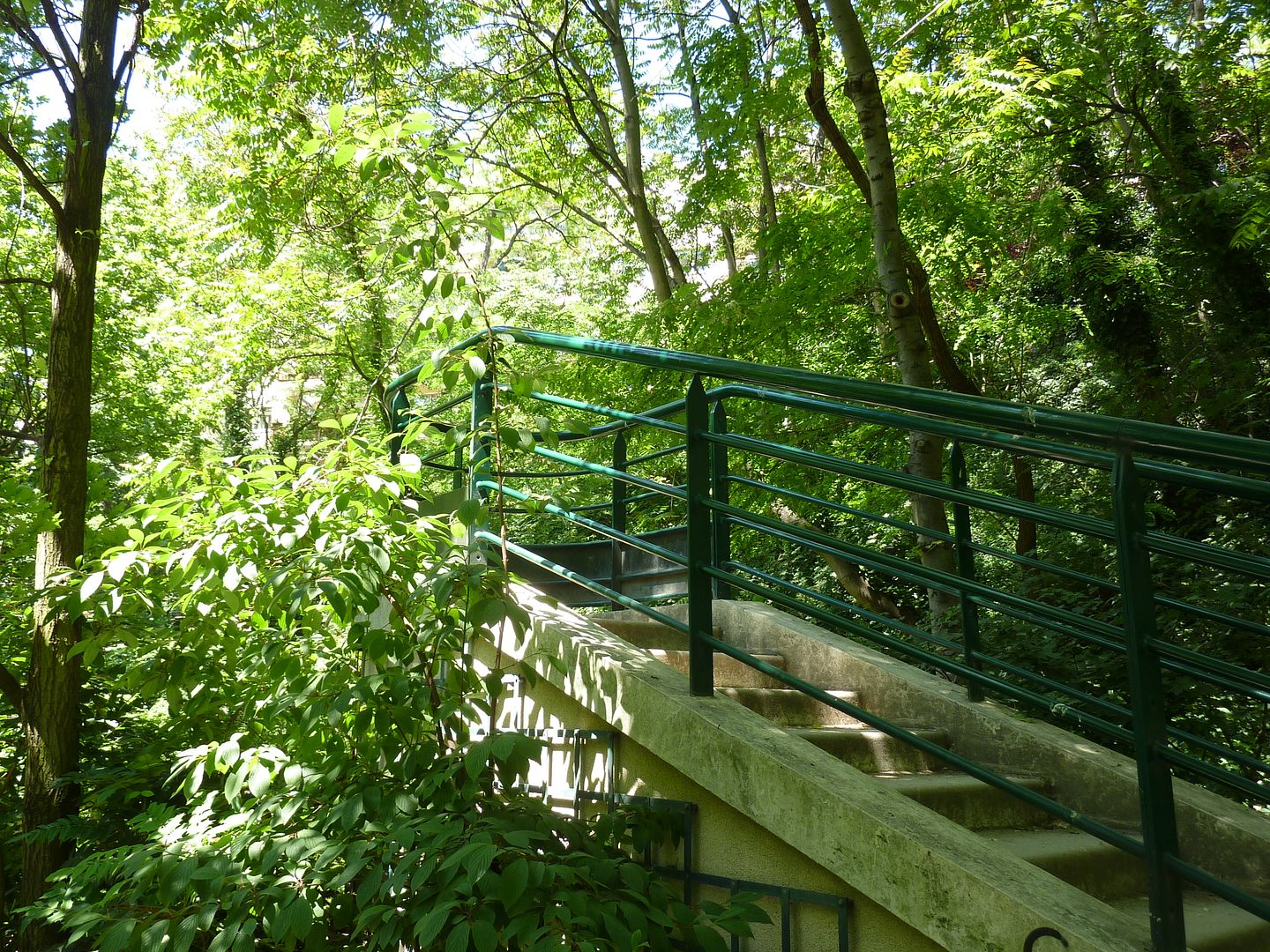
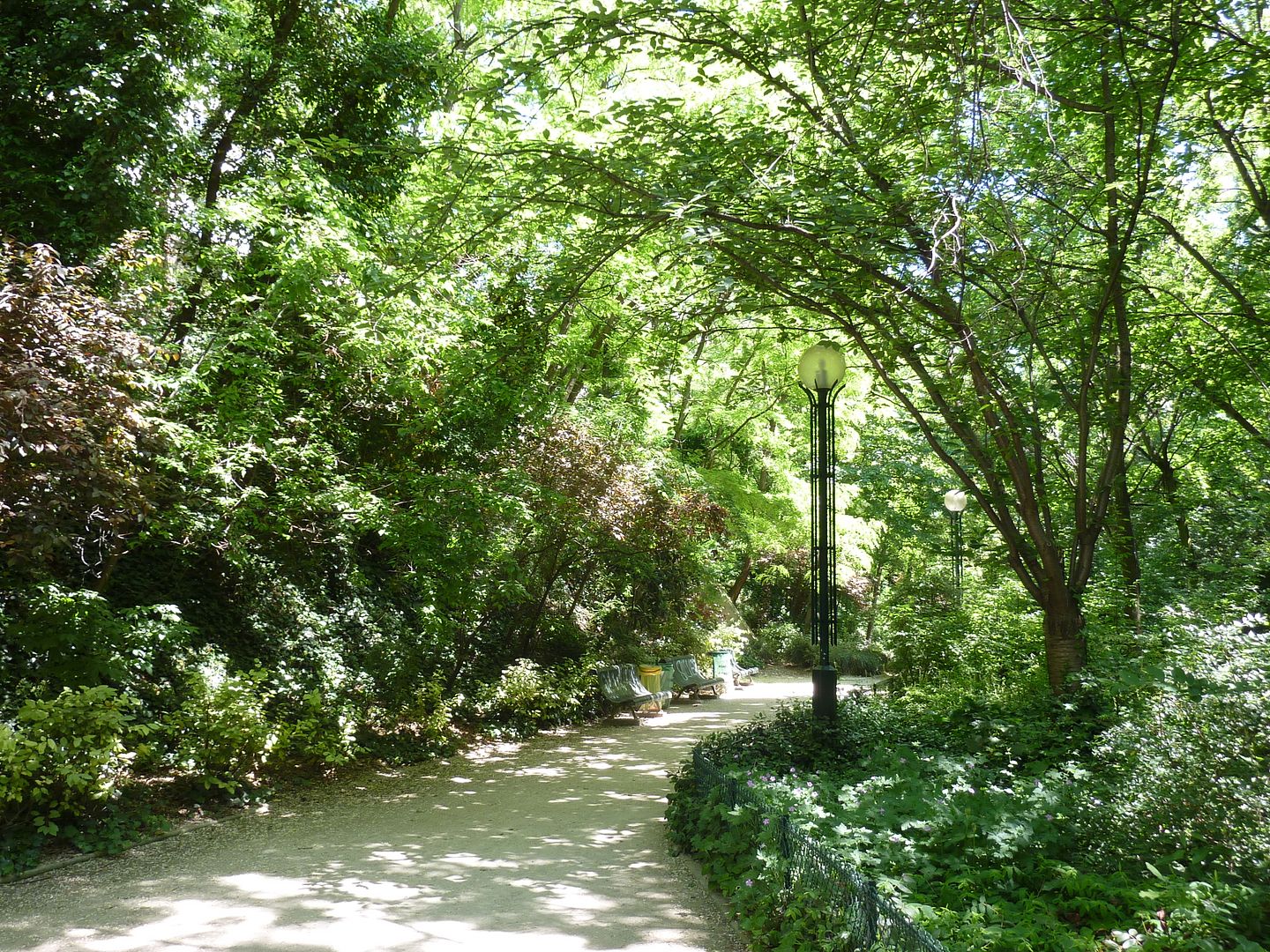
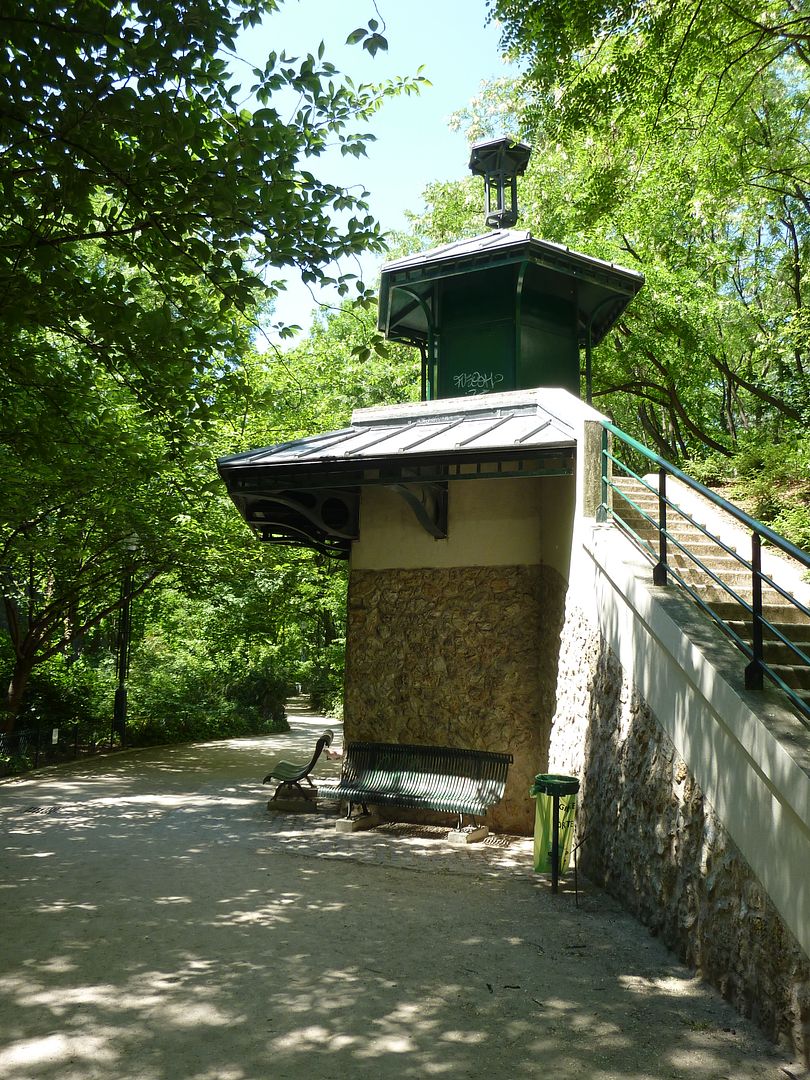

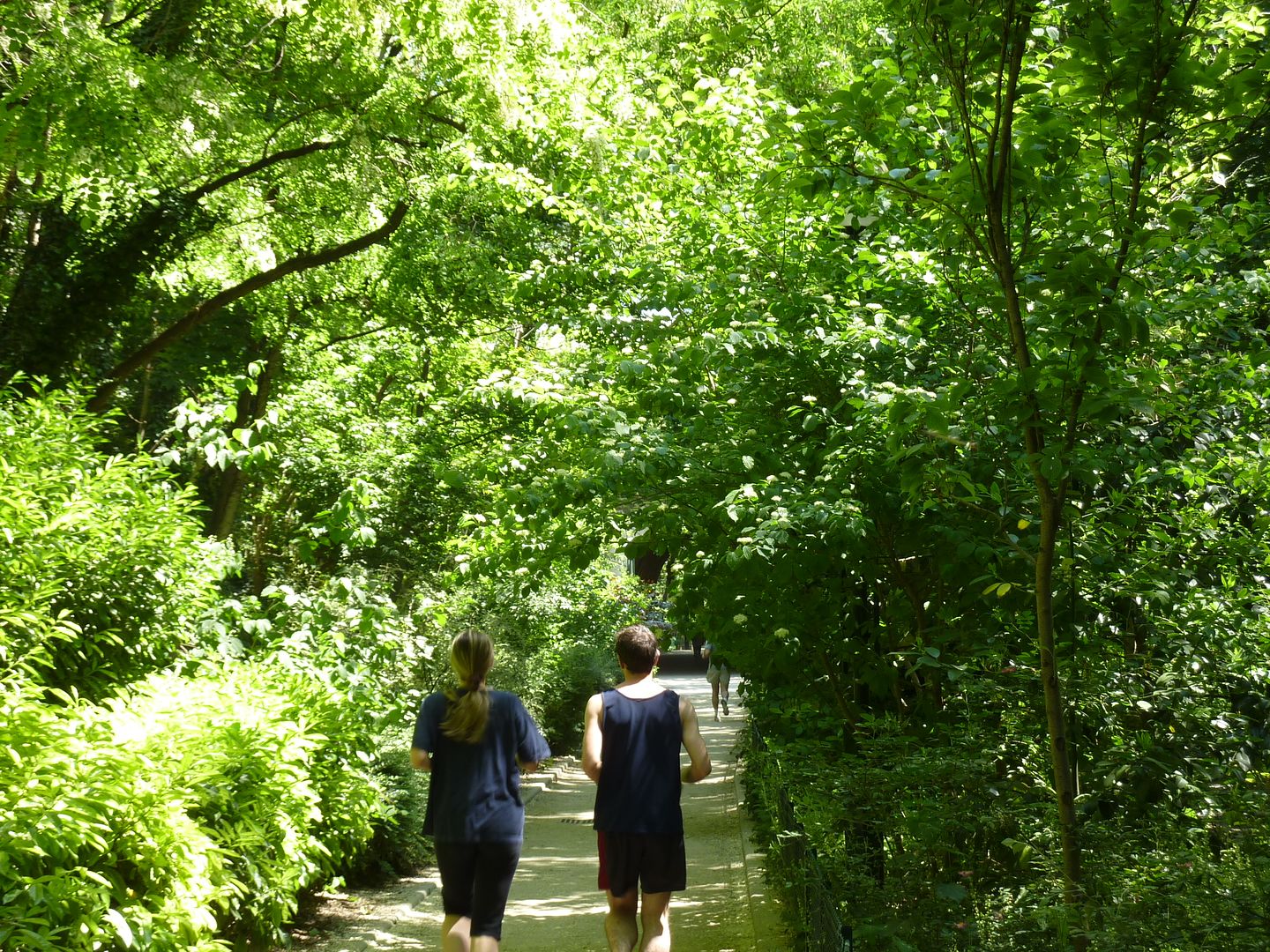

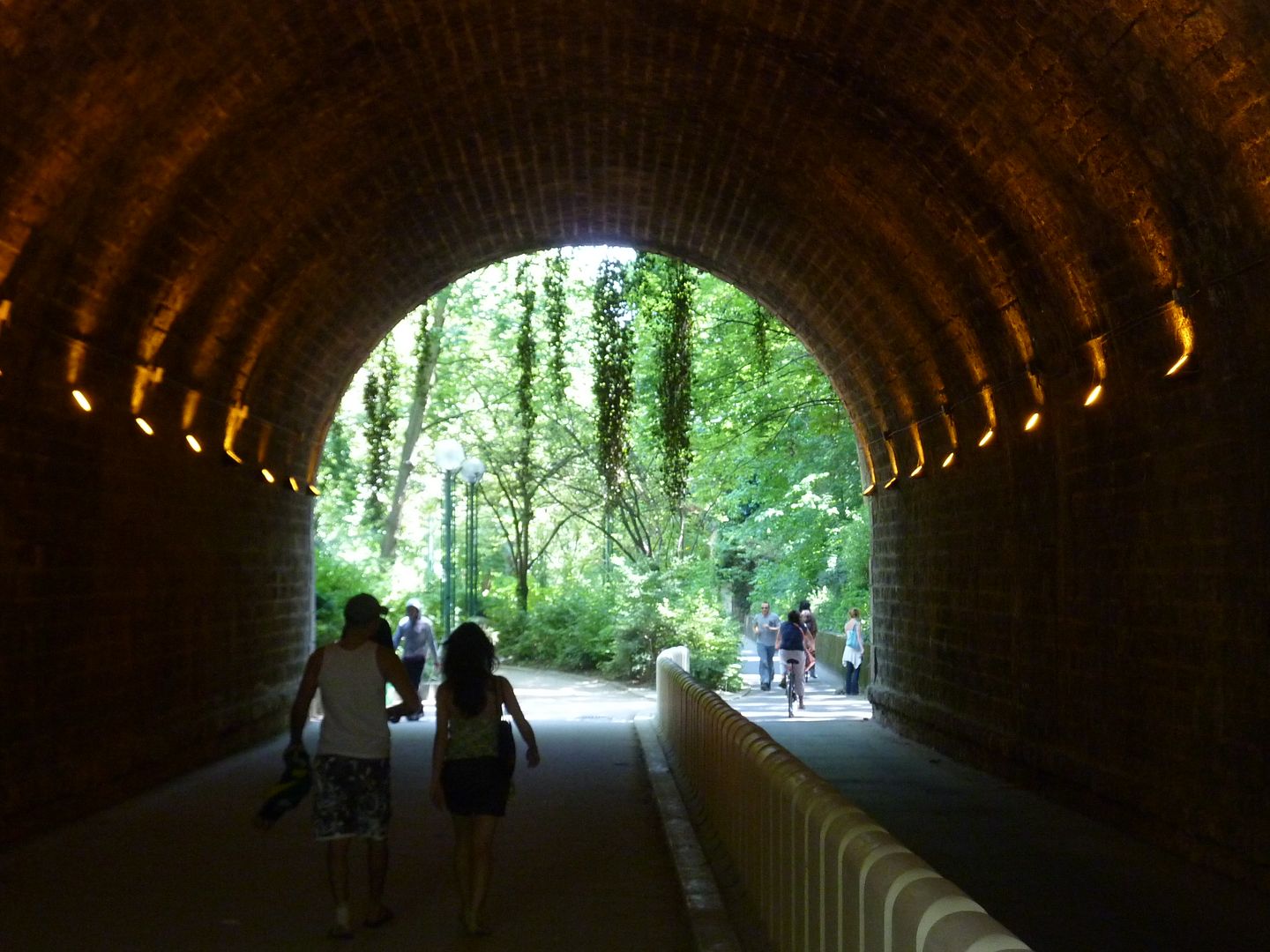
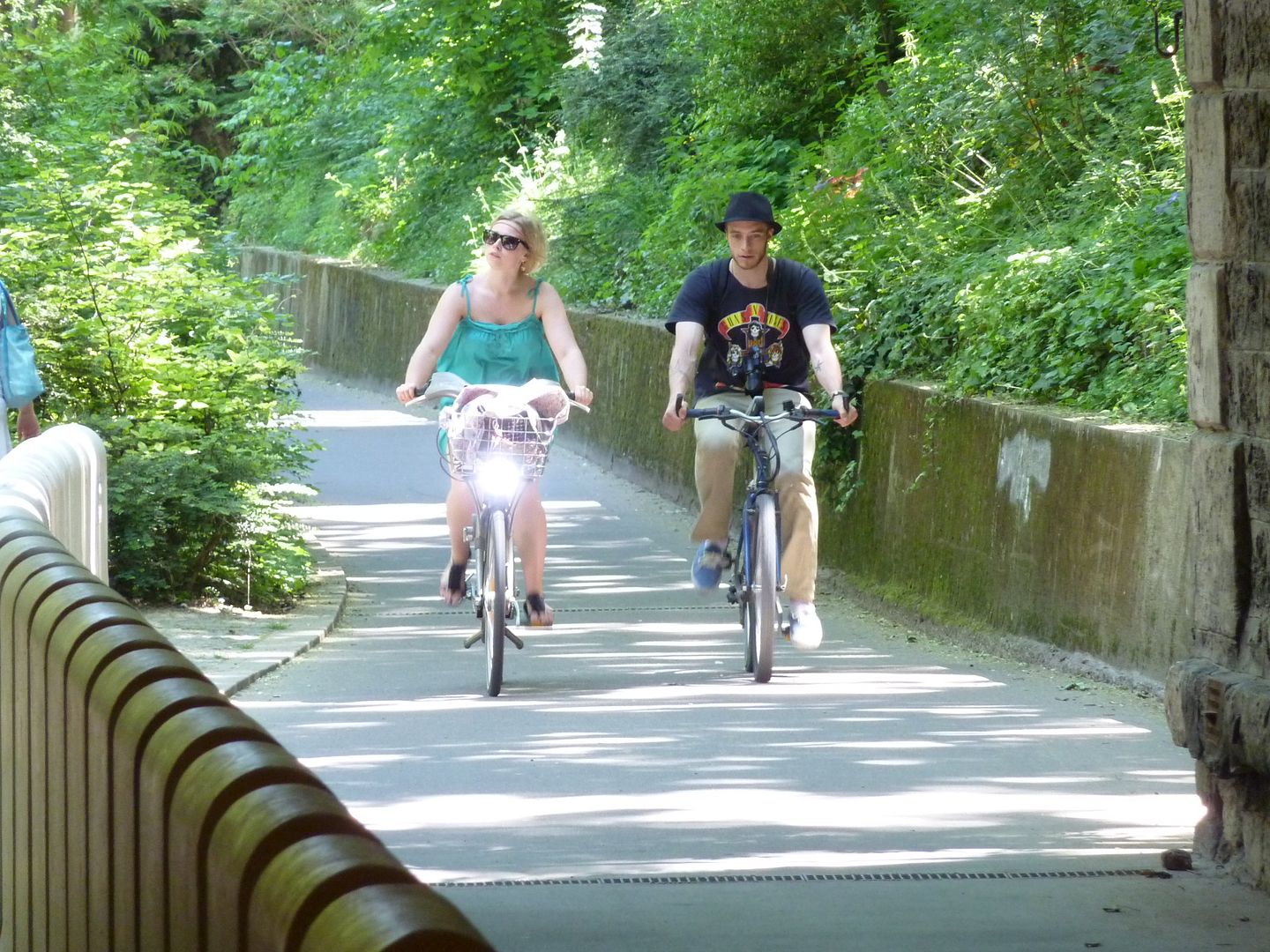
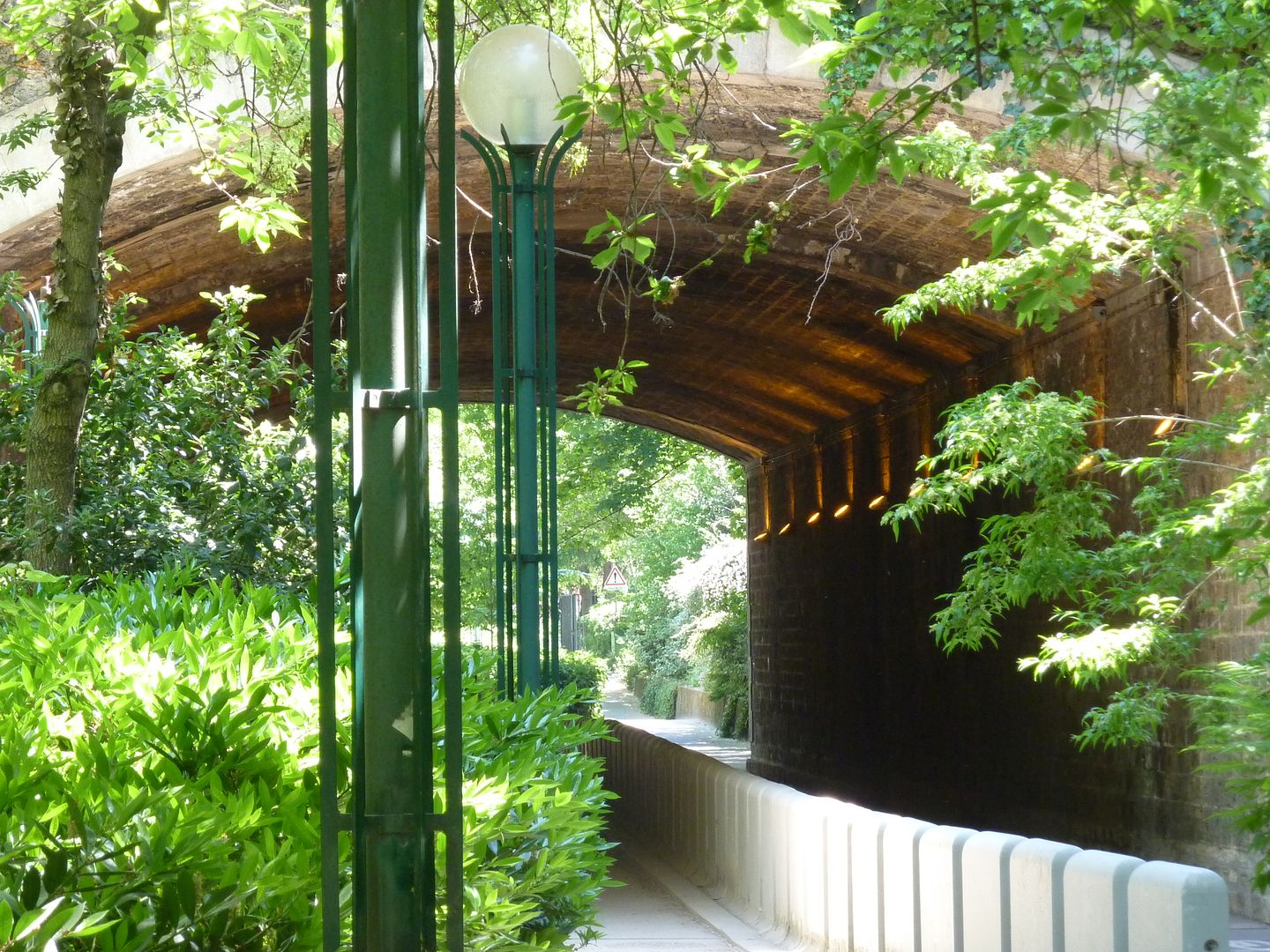

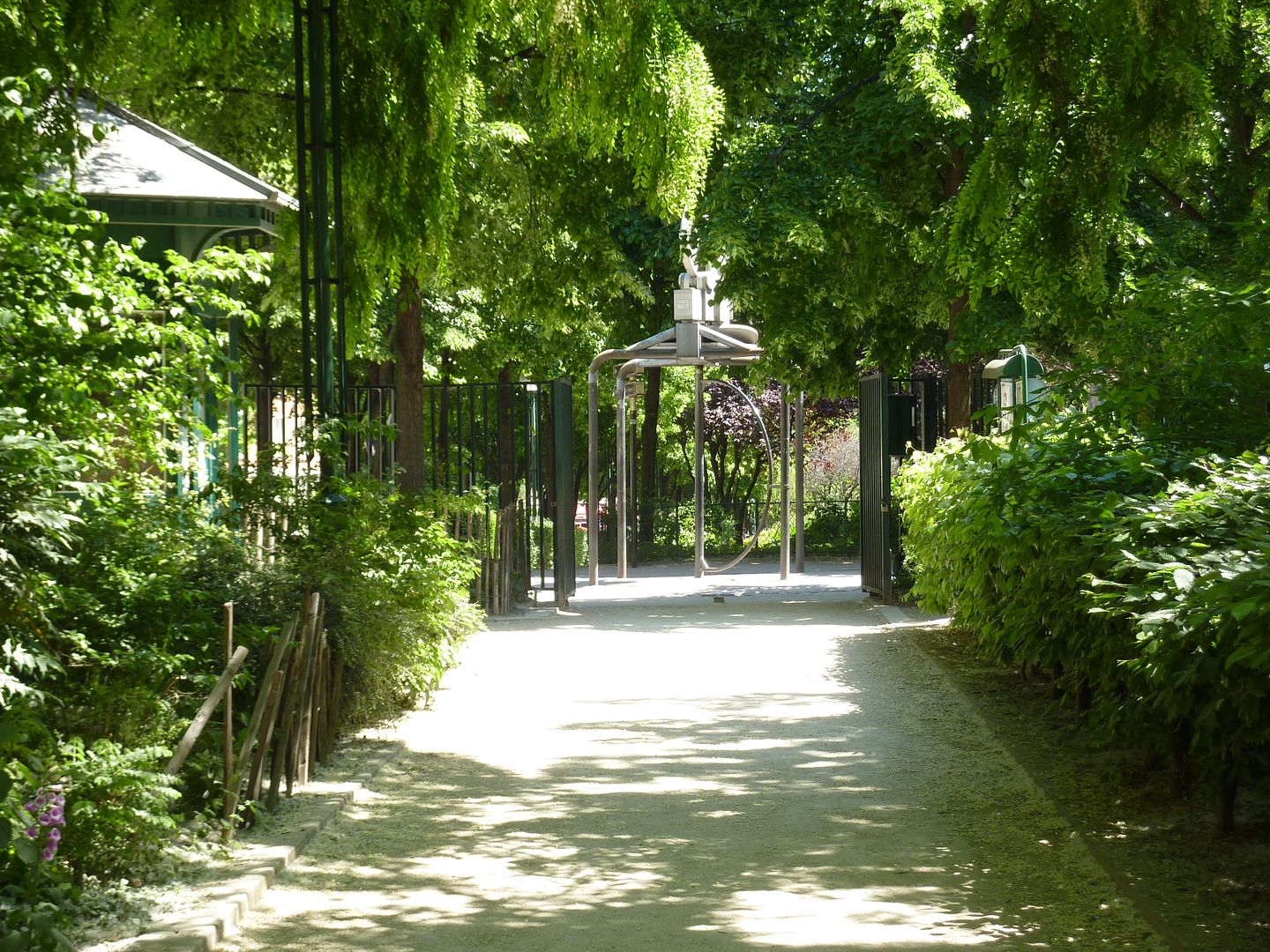
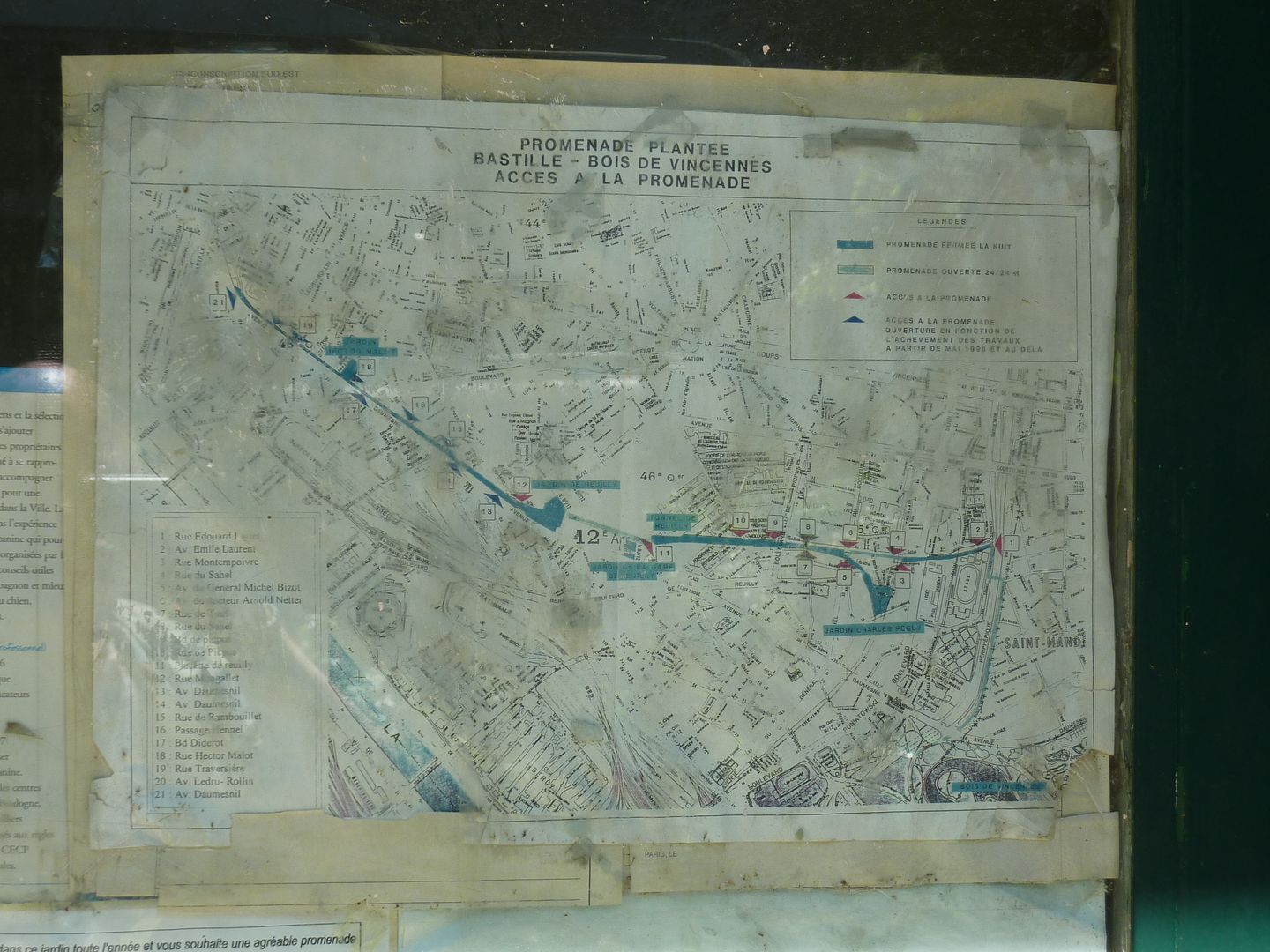

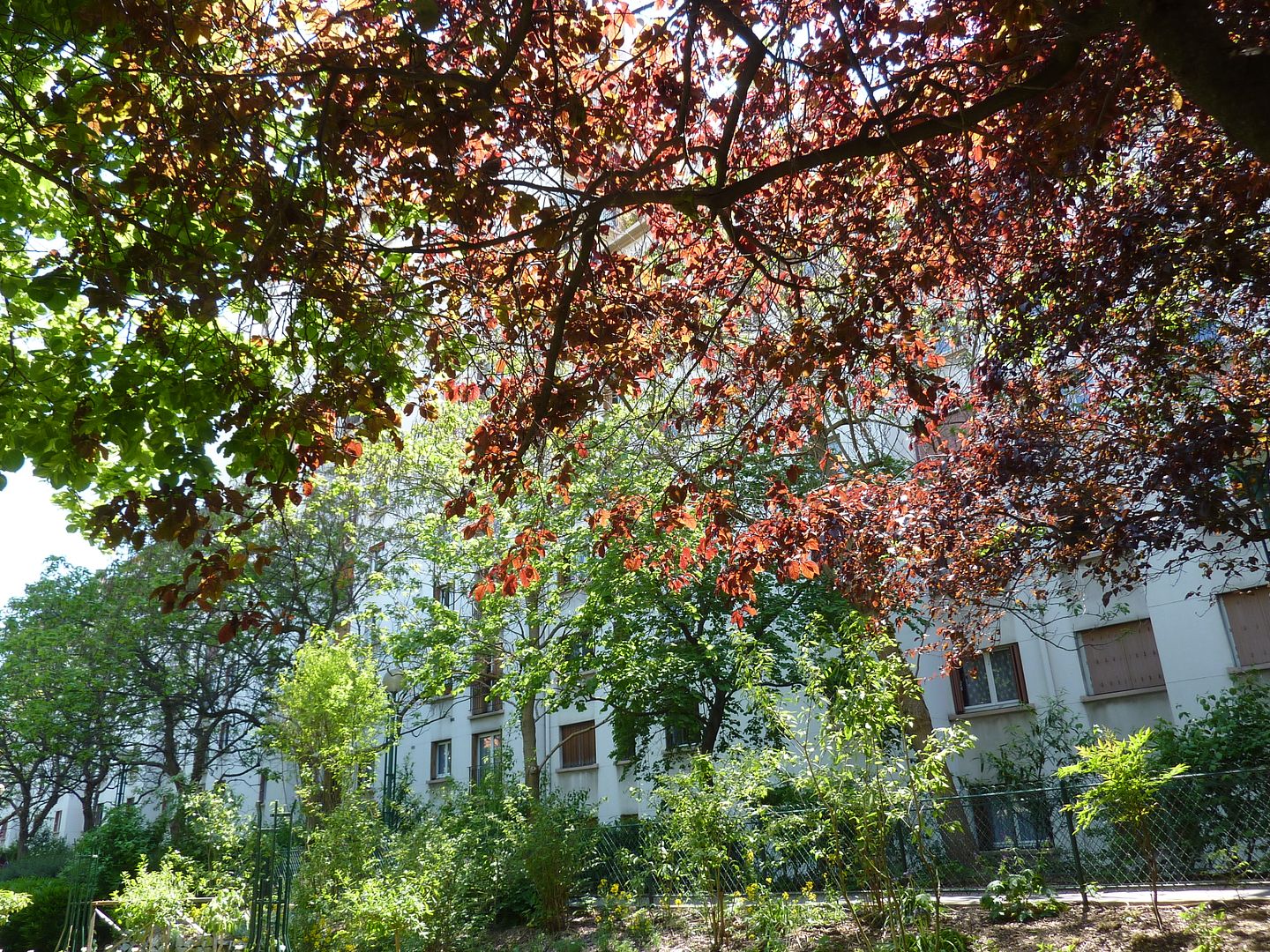
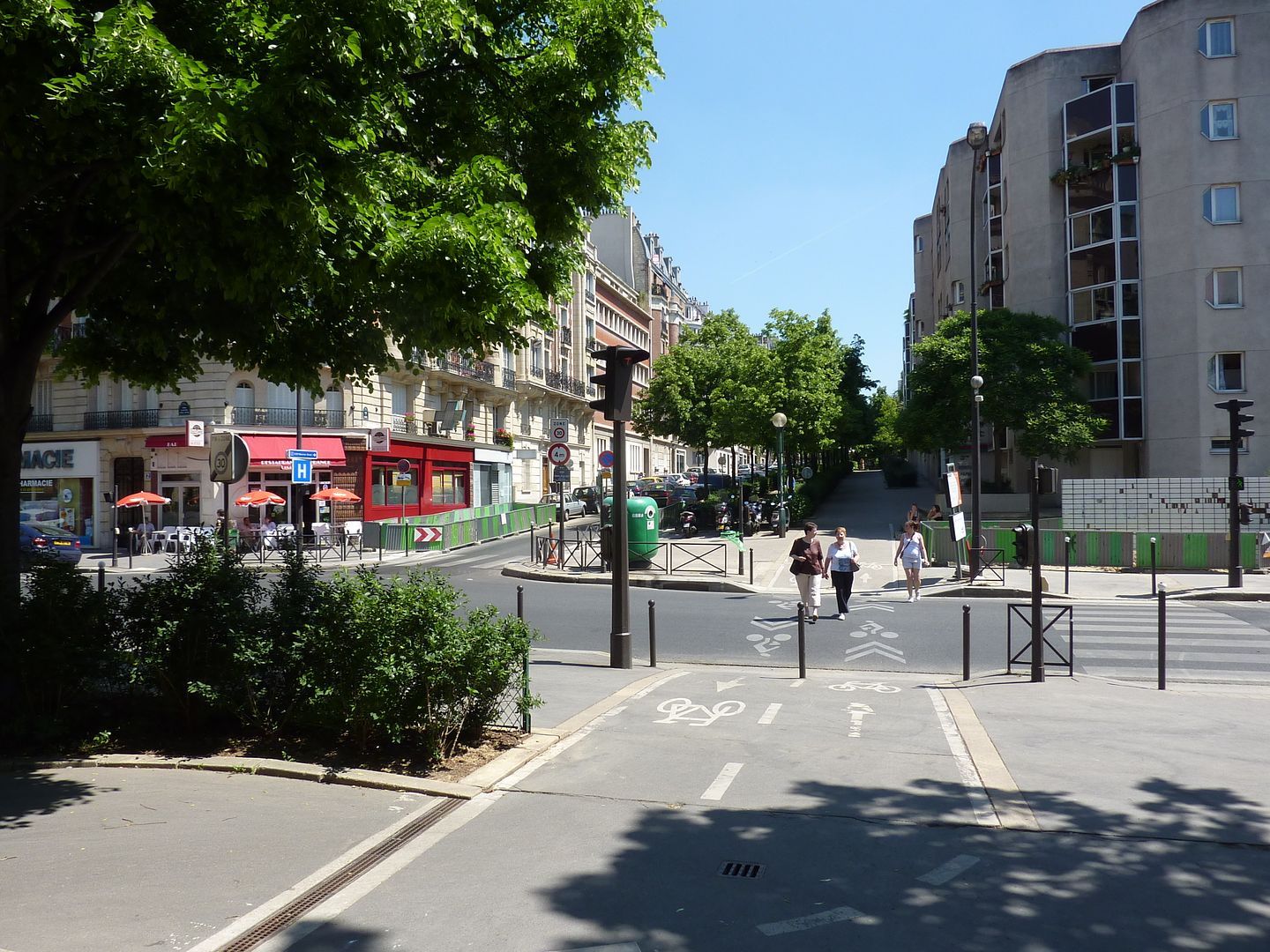
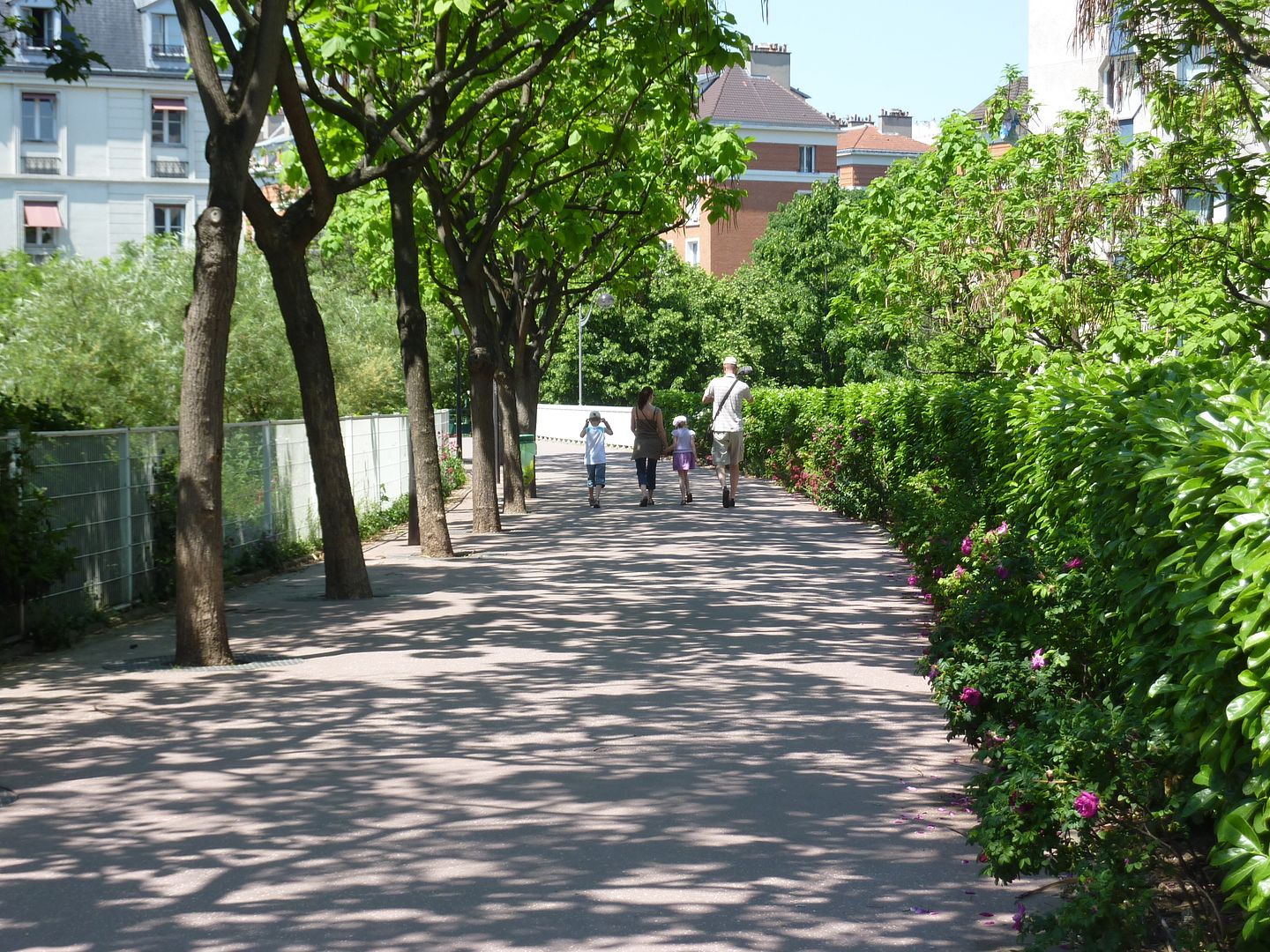
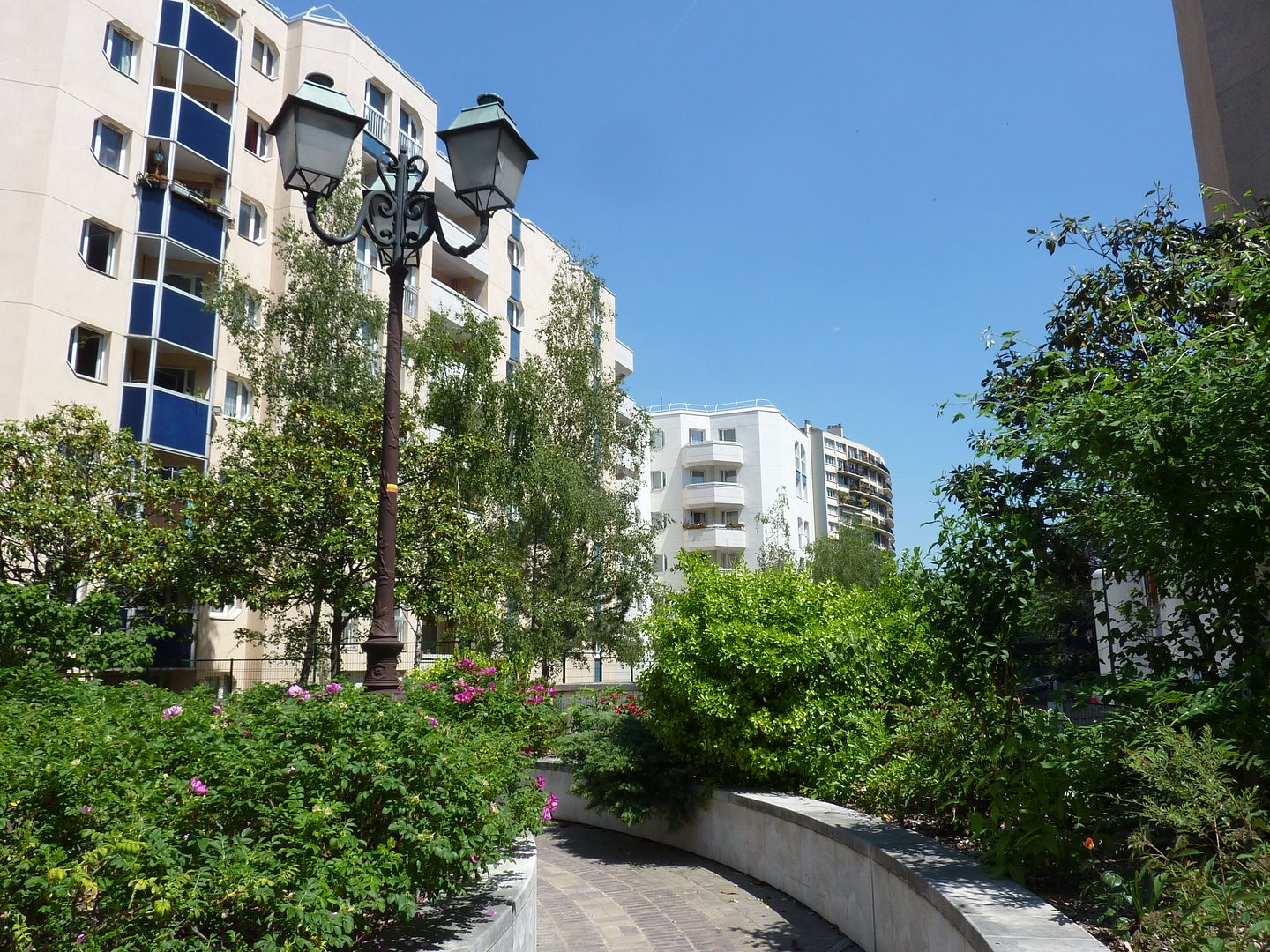
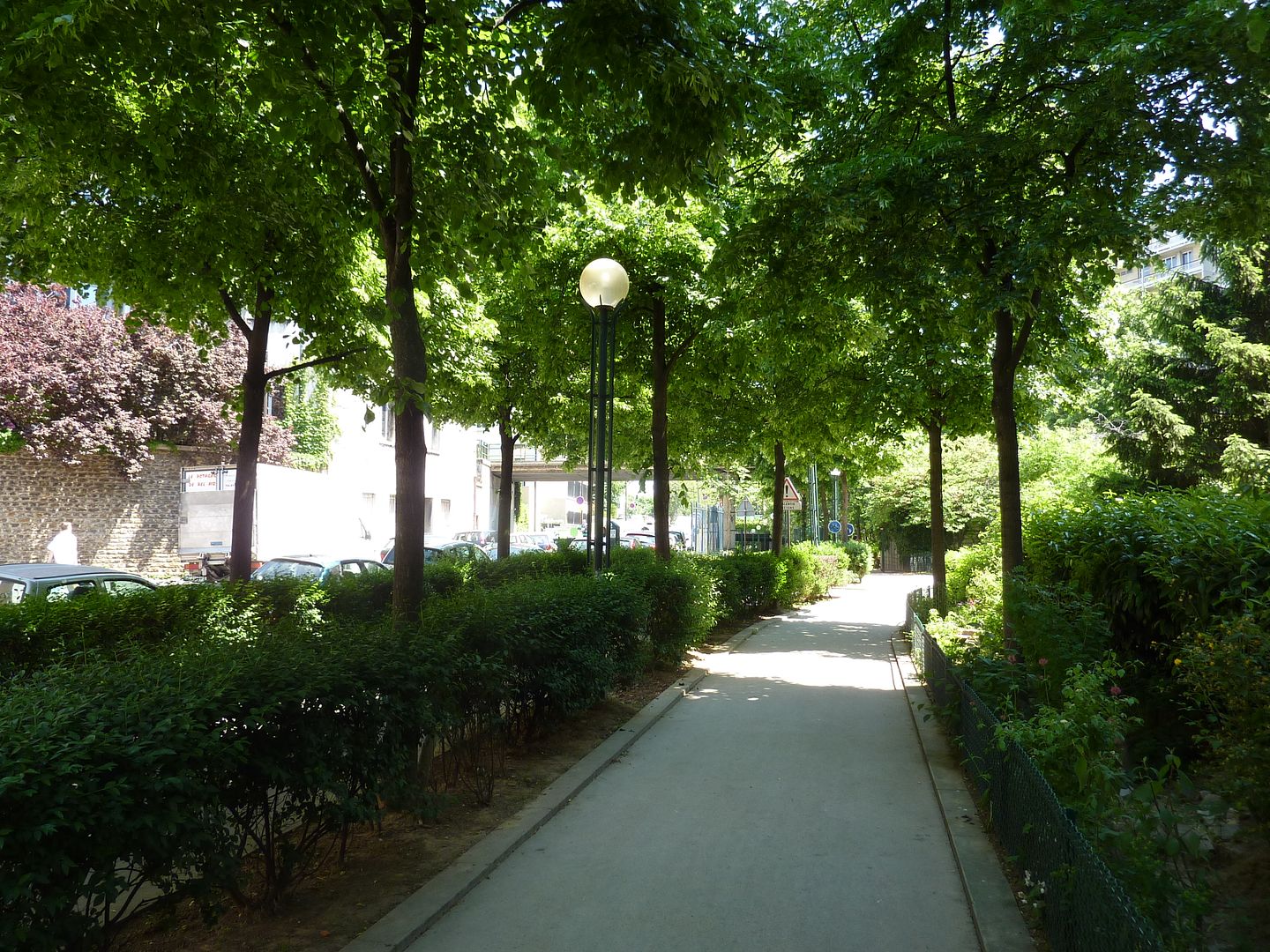
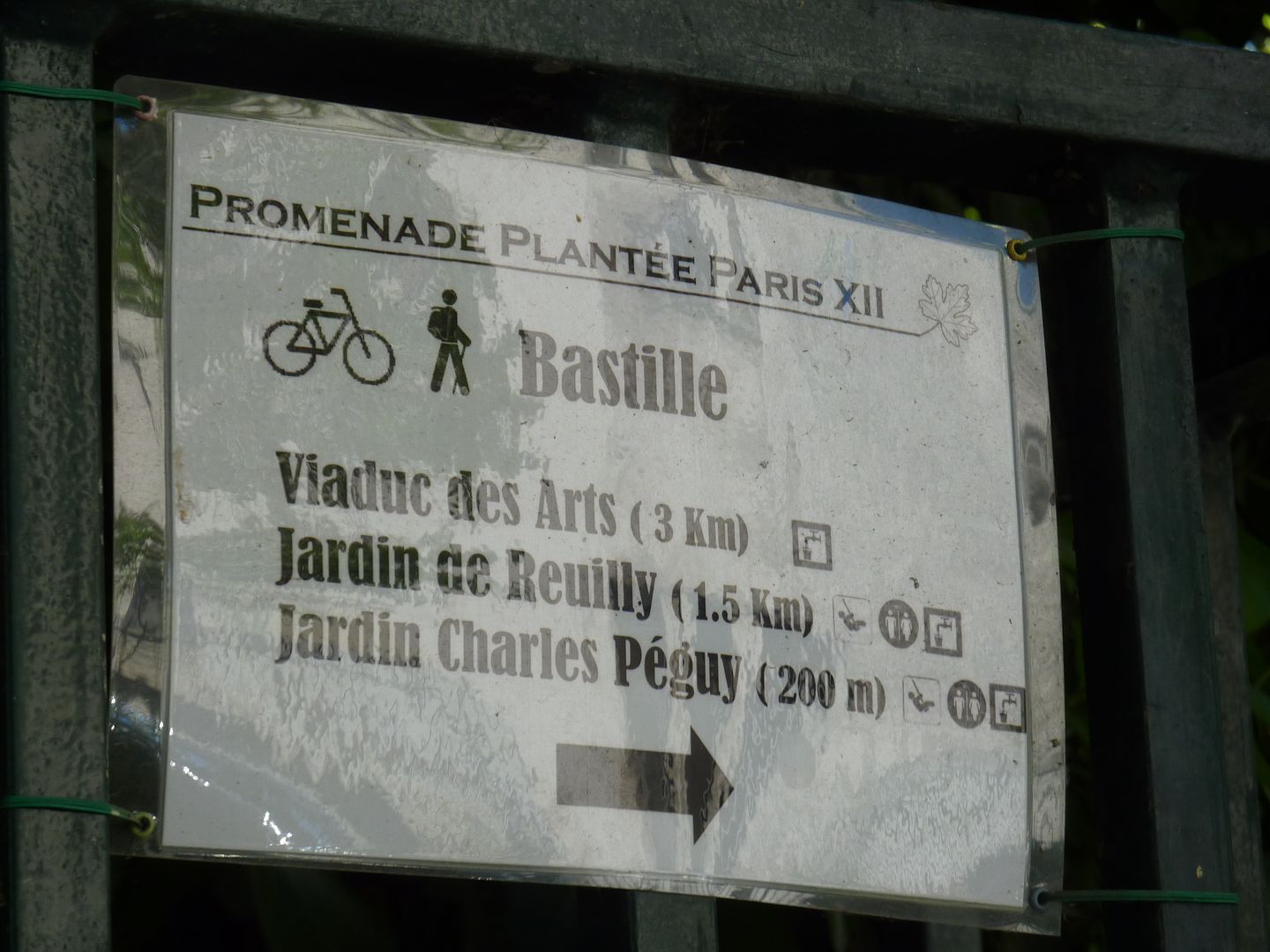
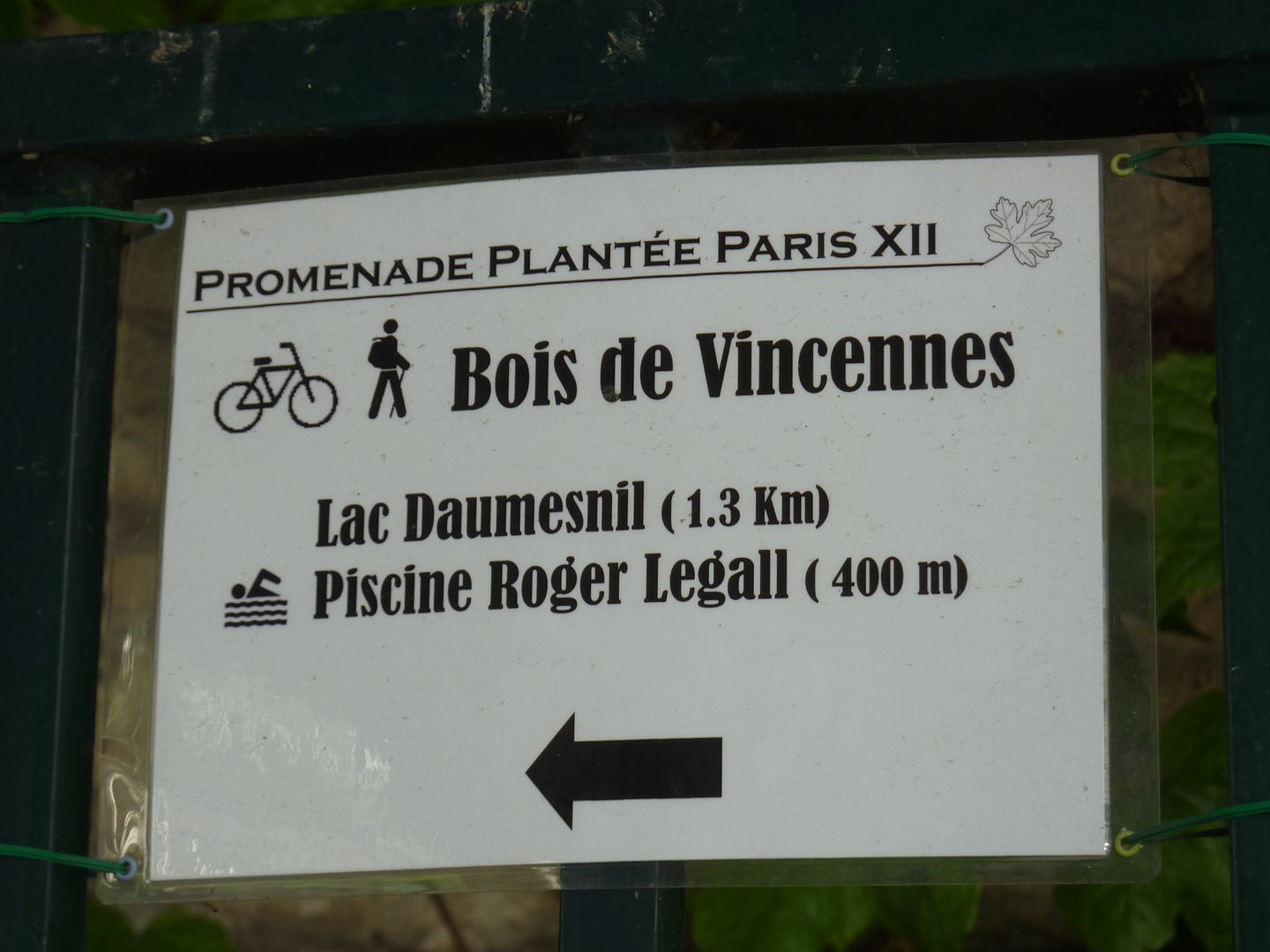
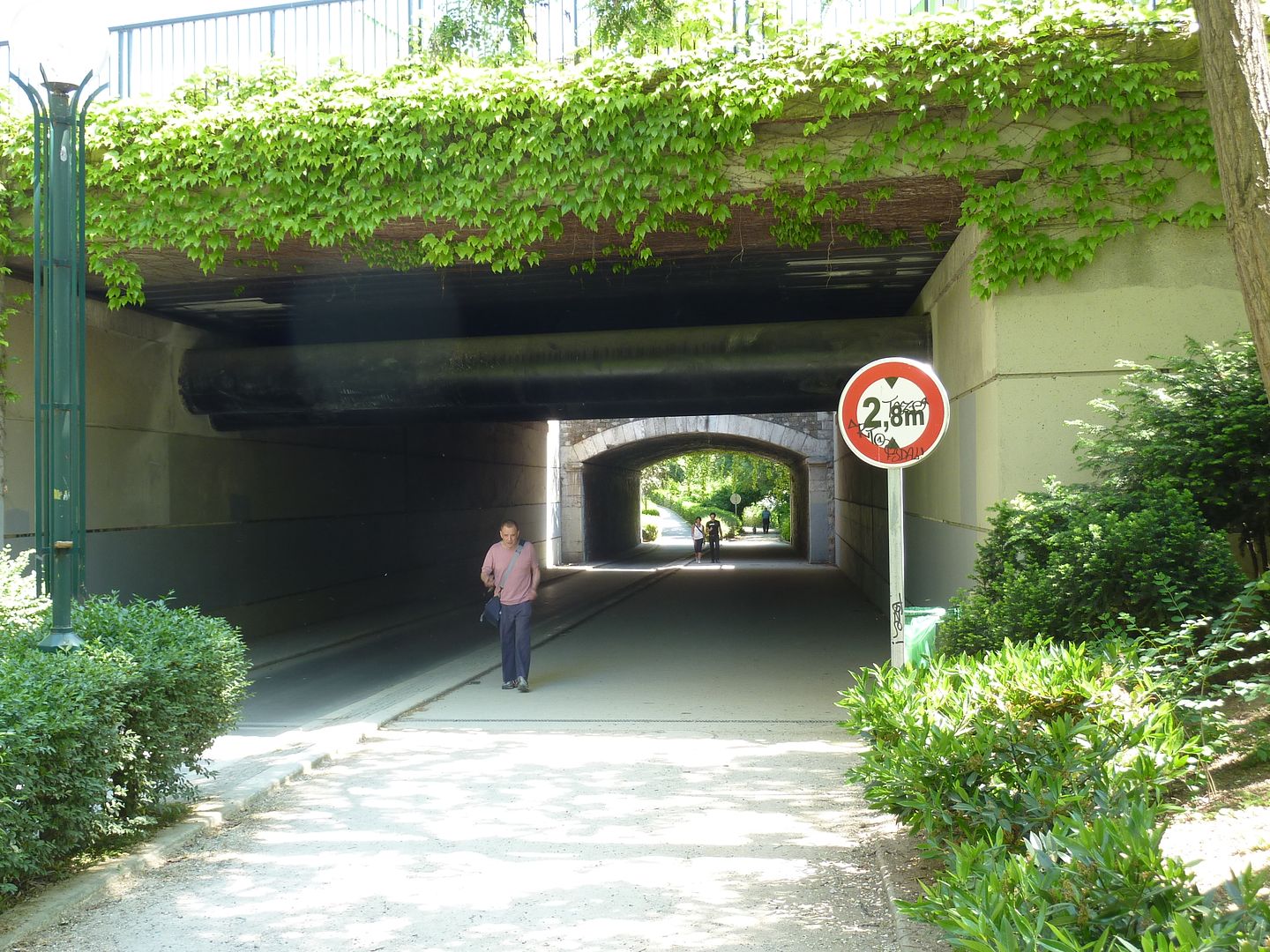
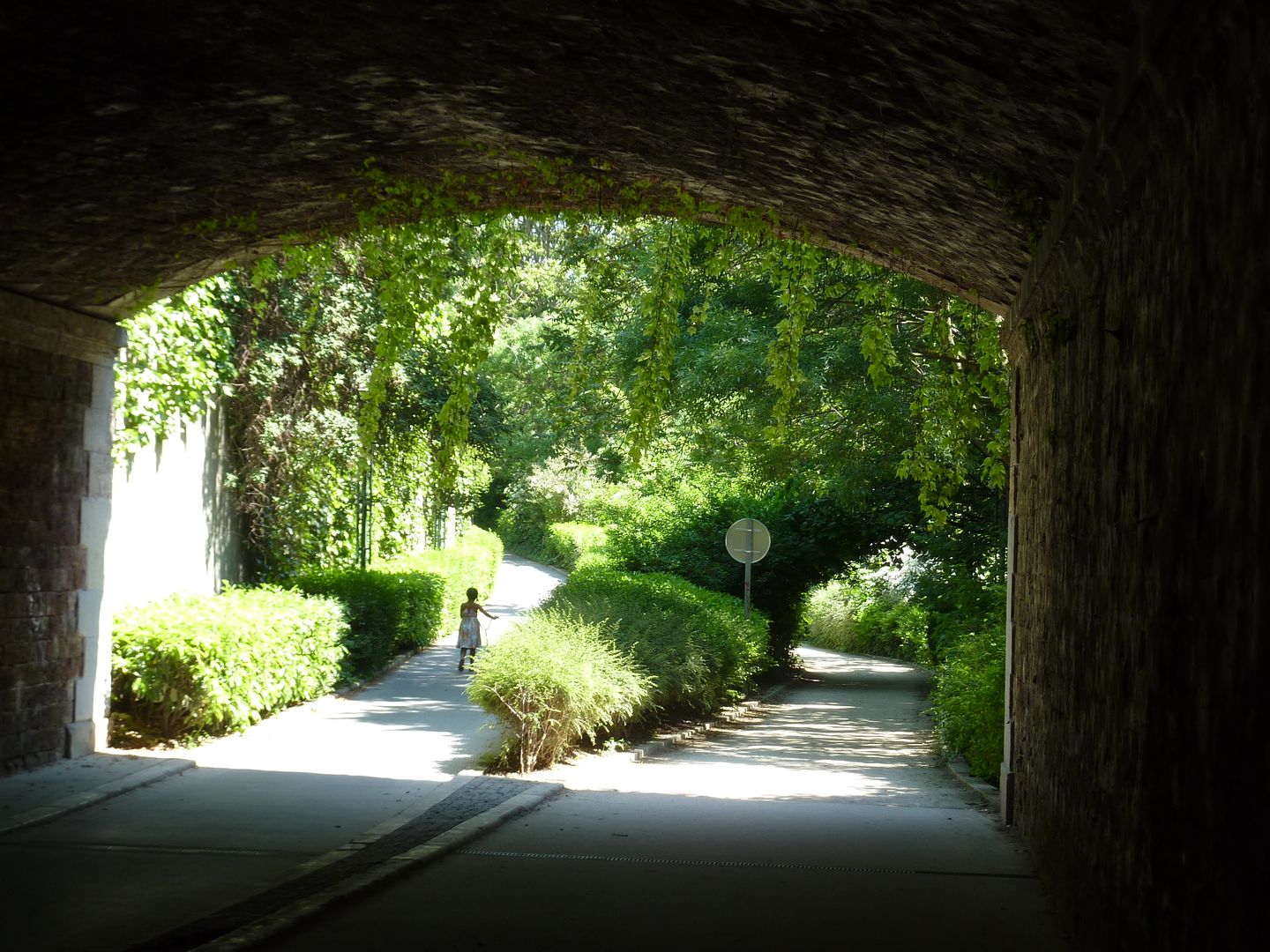
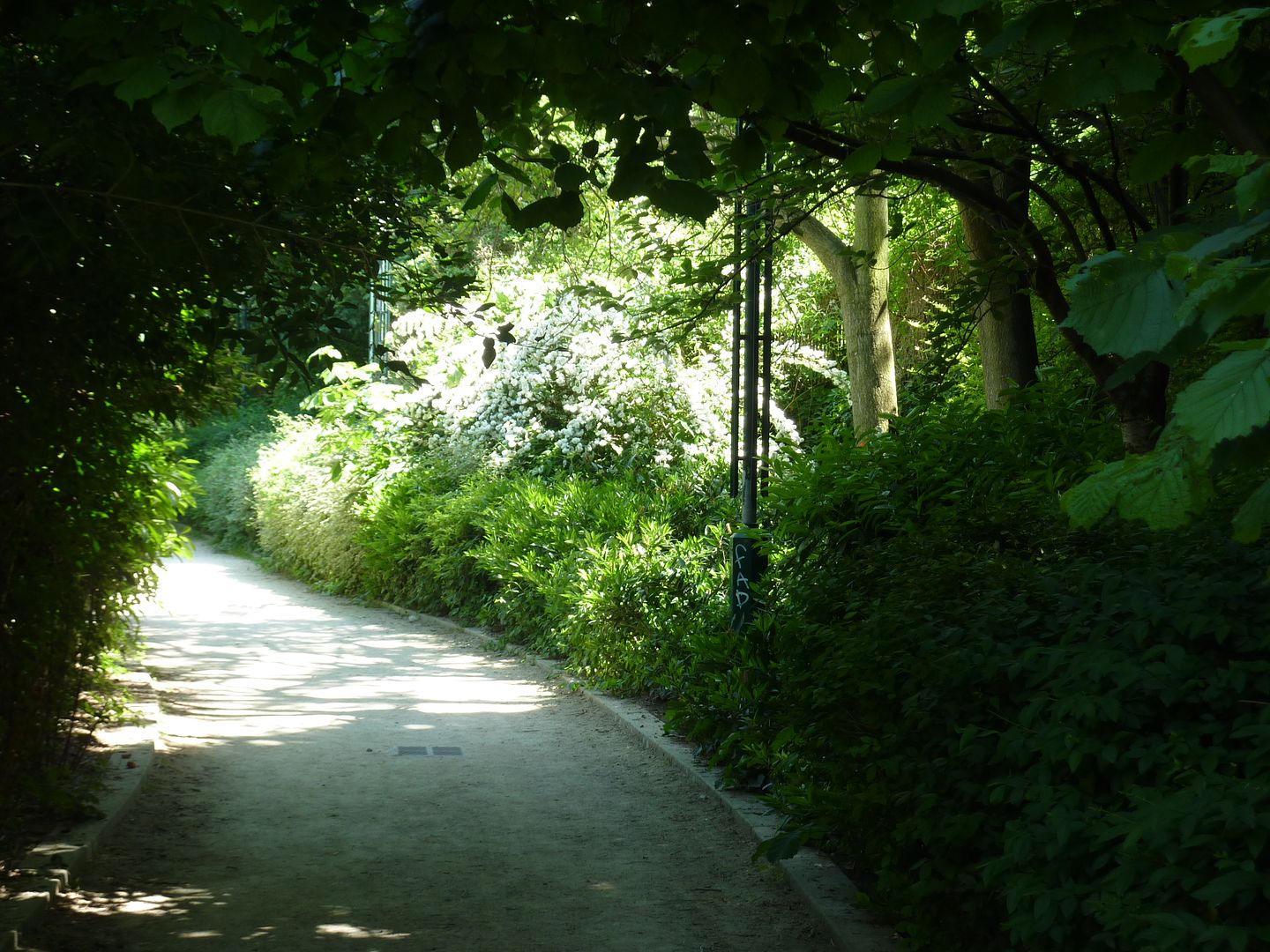

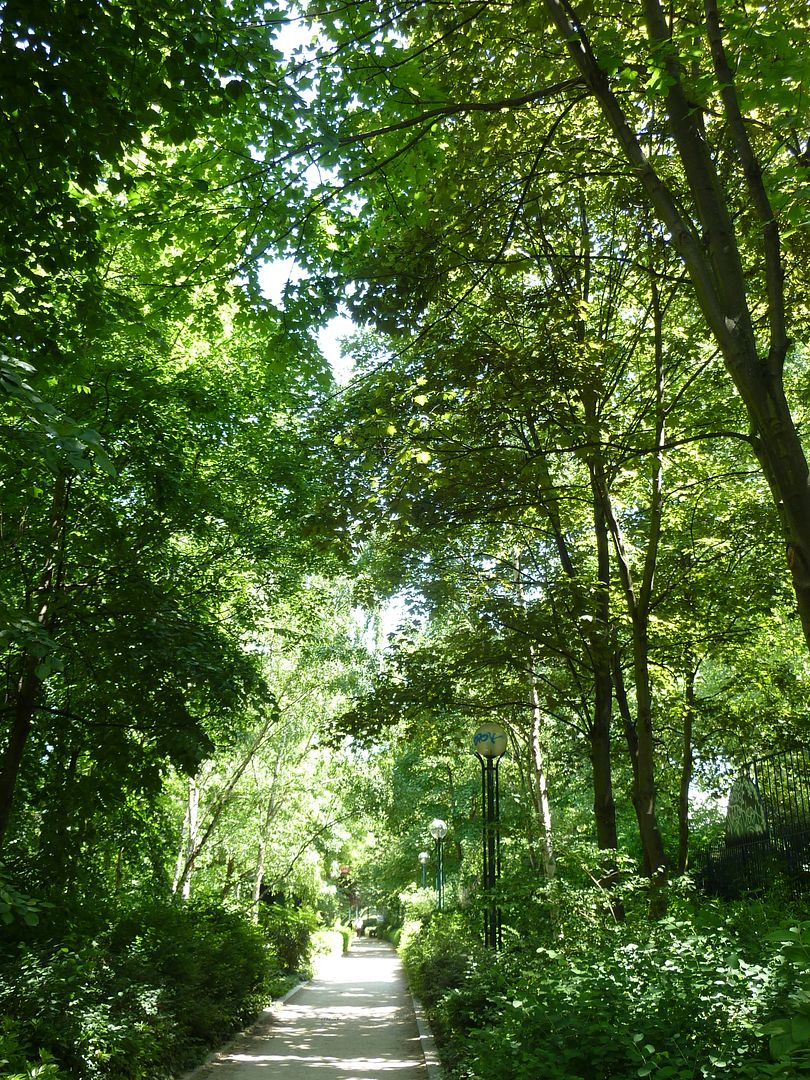
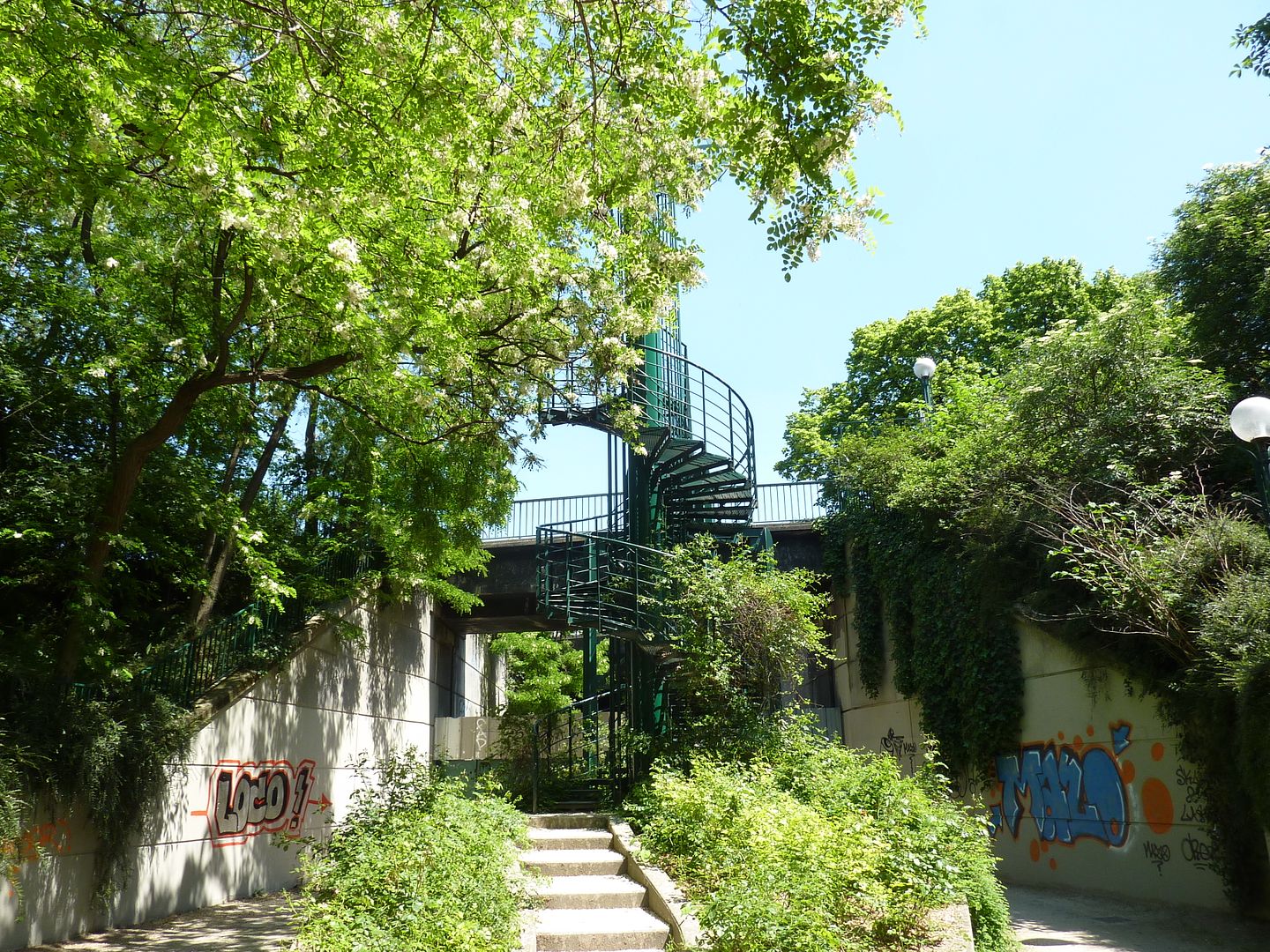
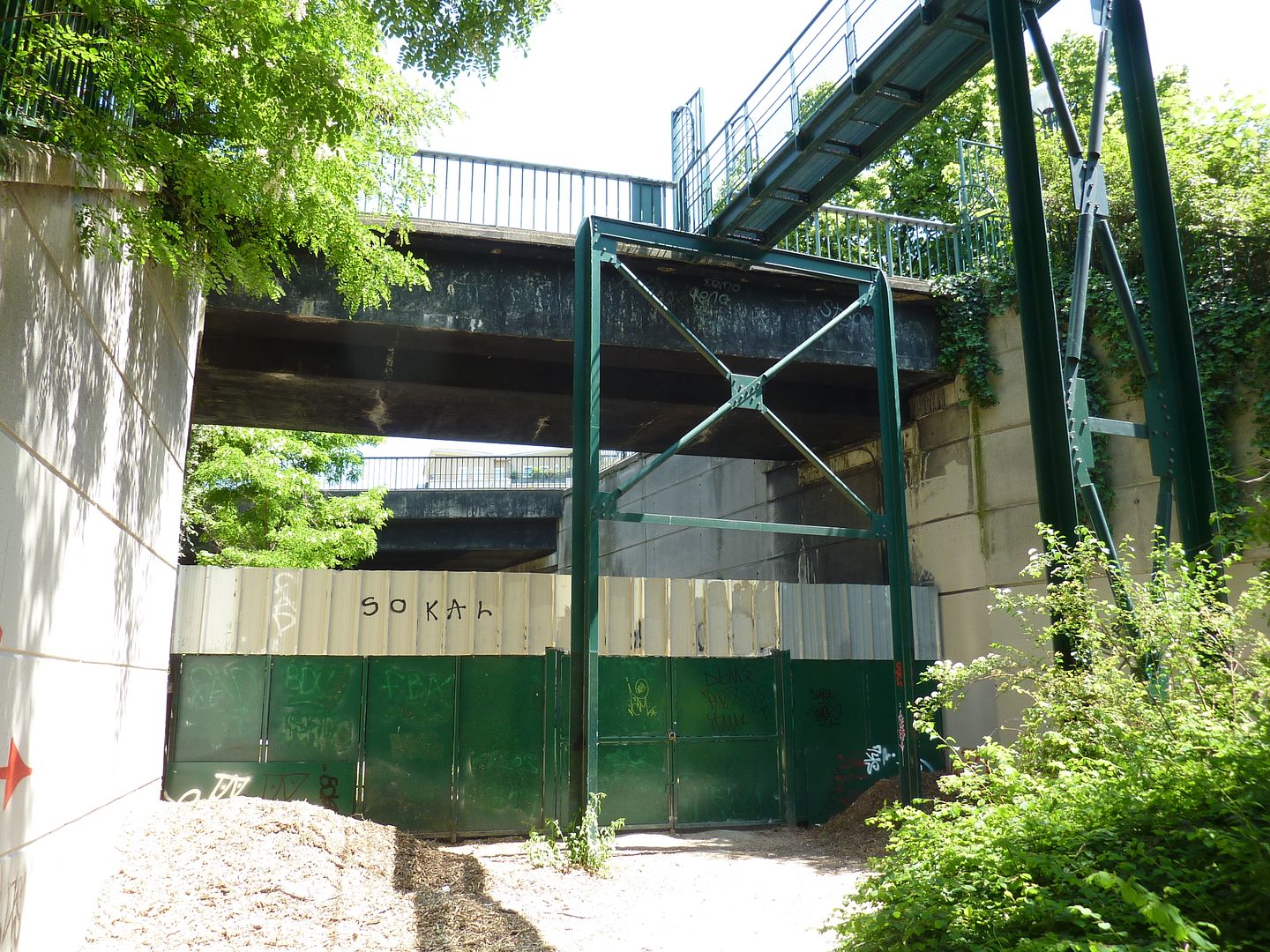
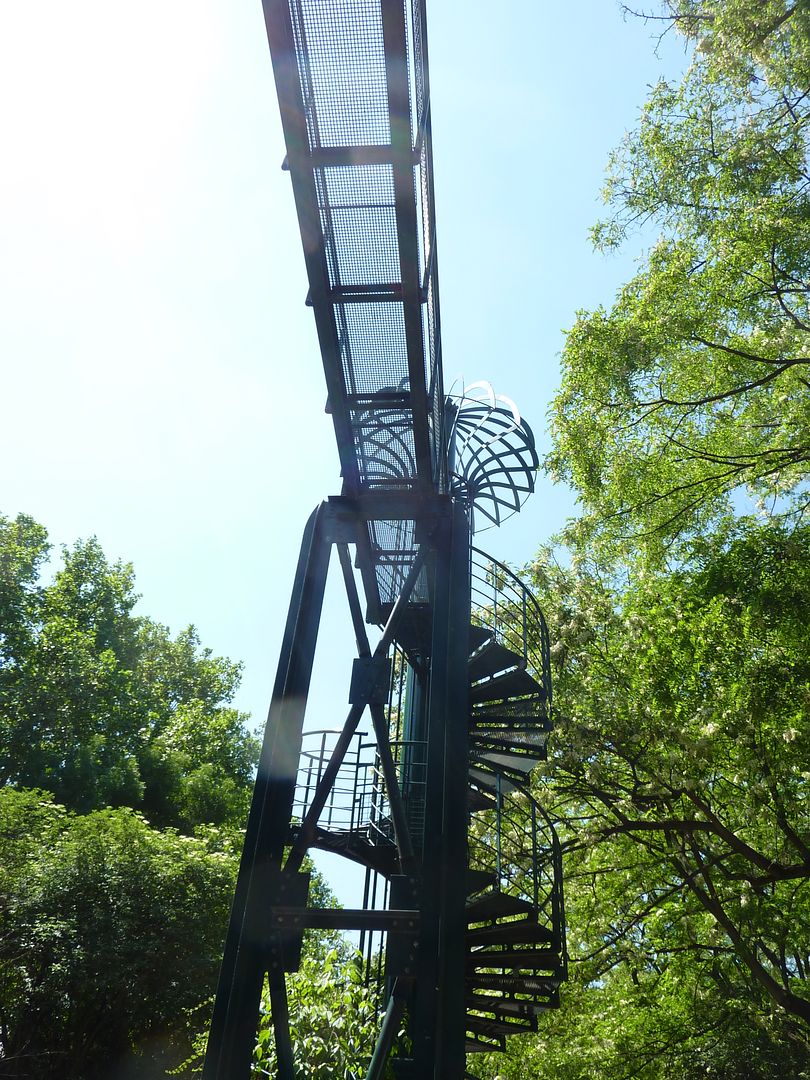
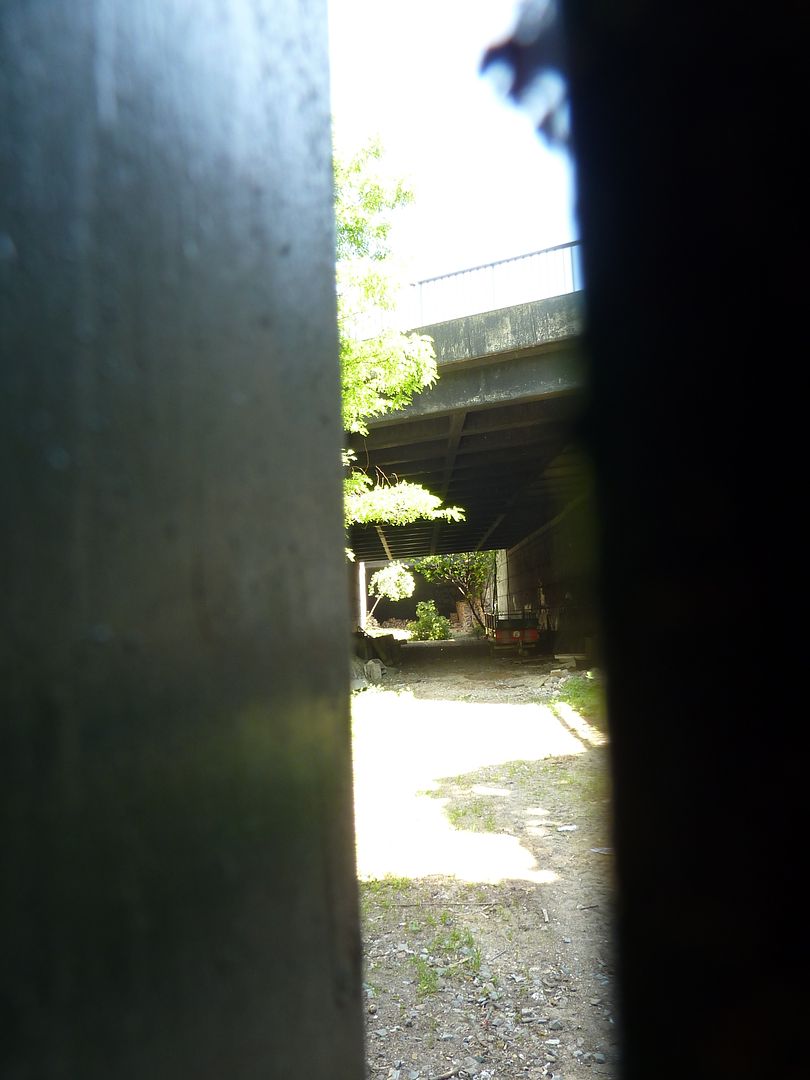
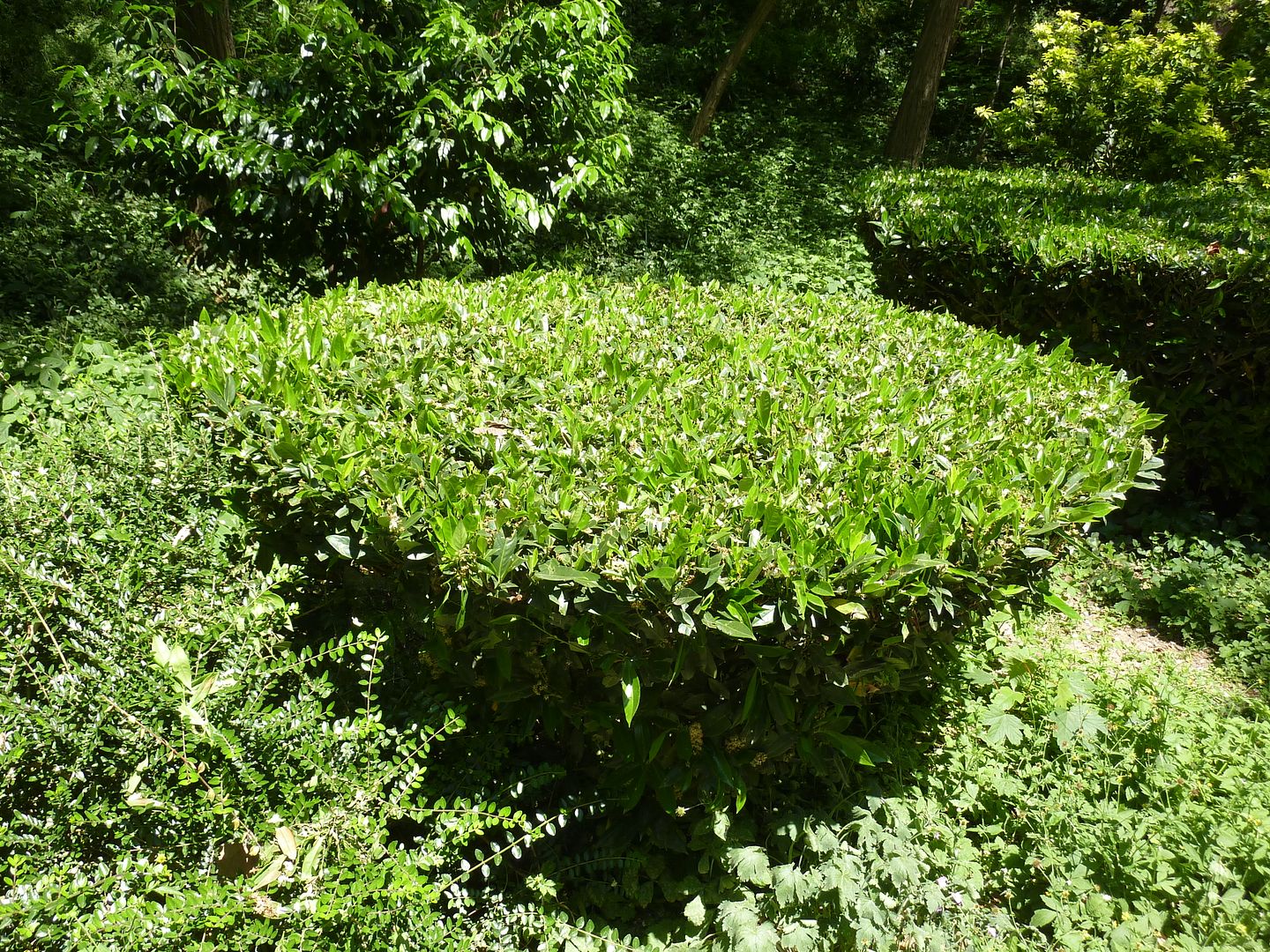

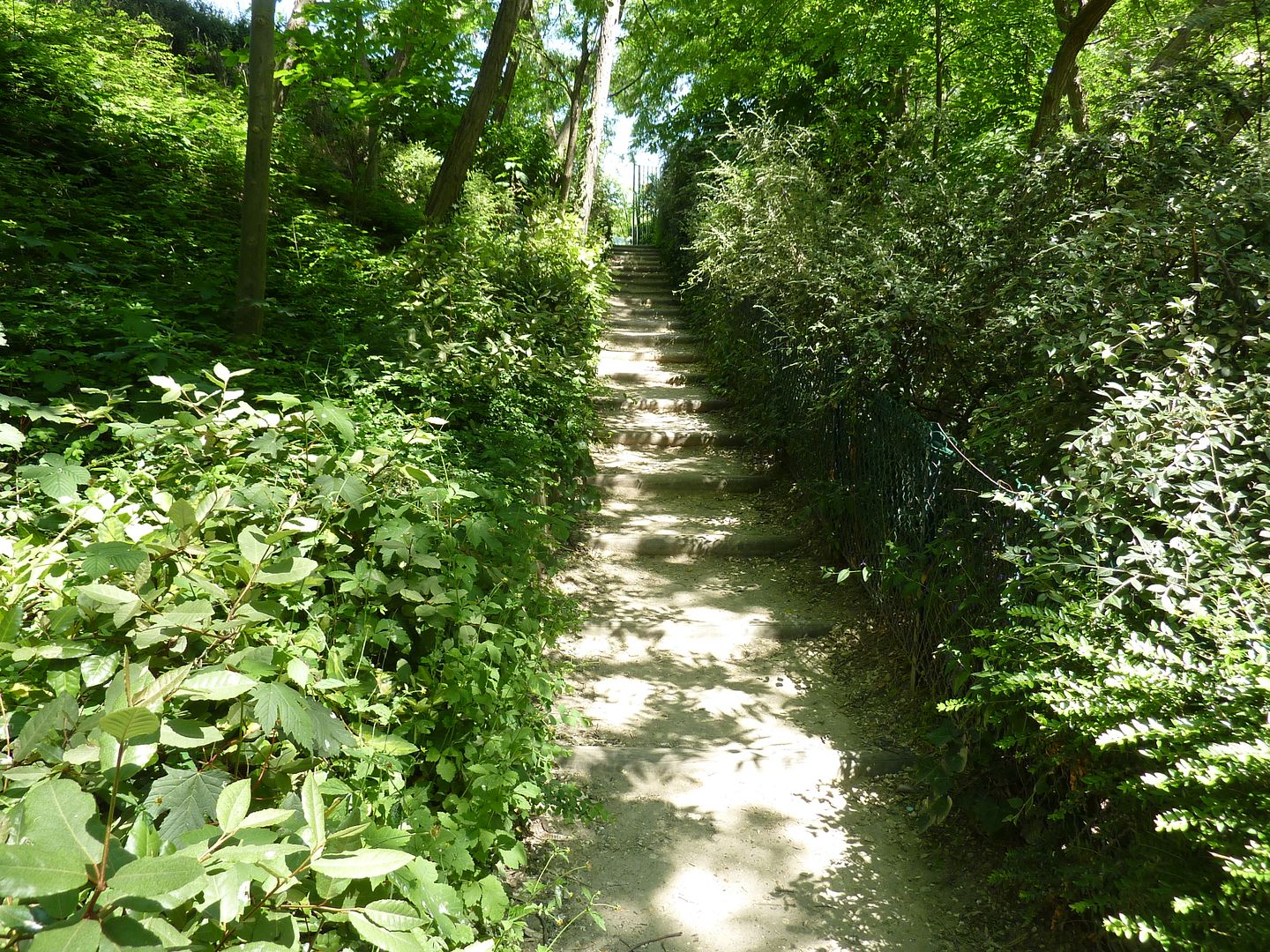


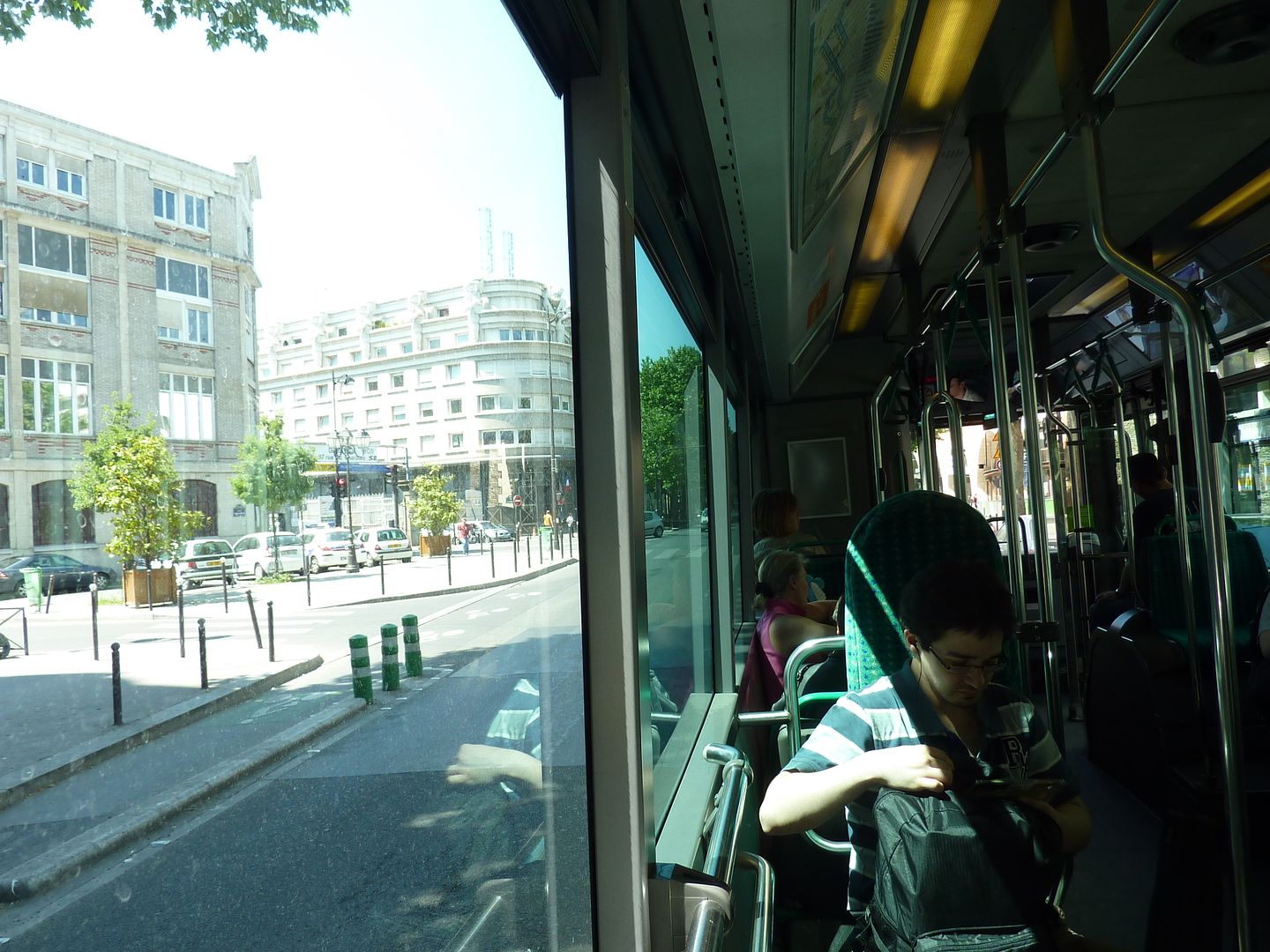


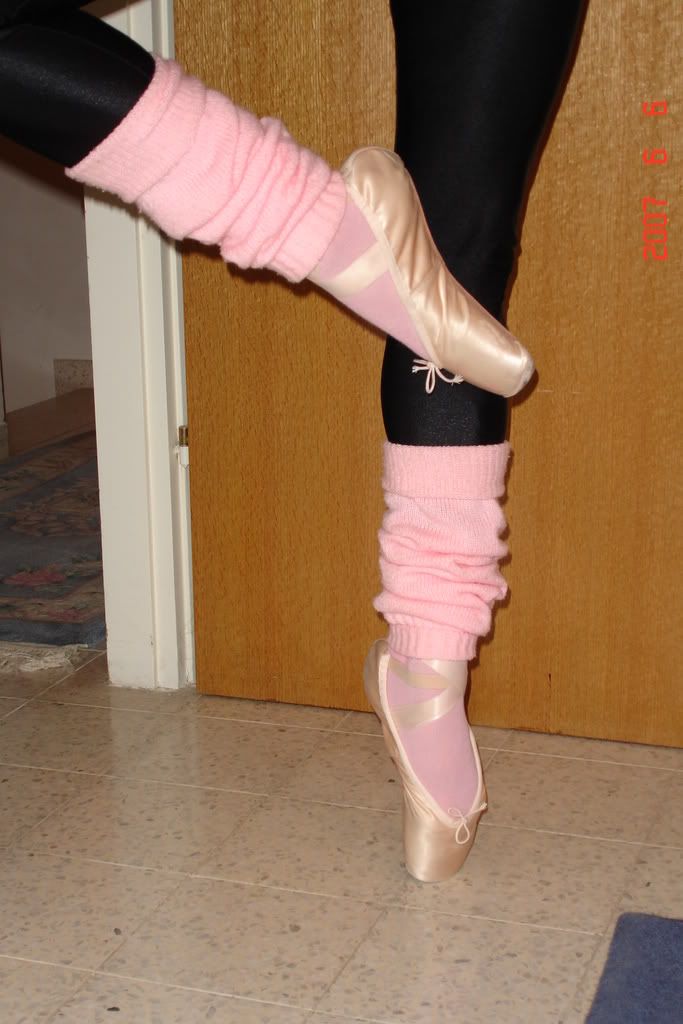
 ) is over.
) is over.

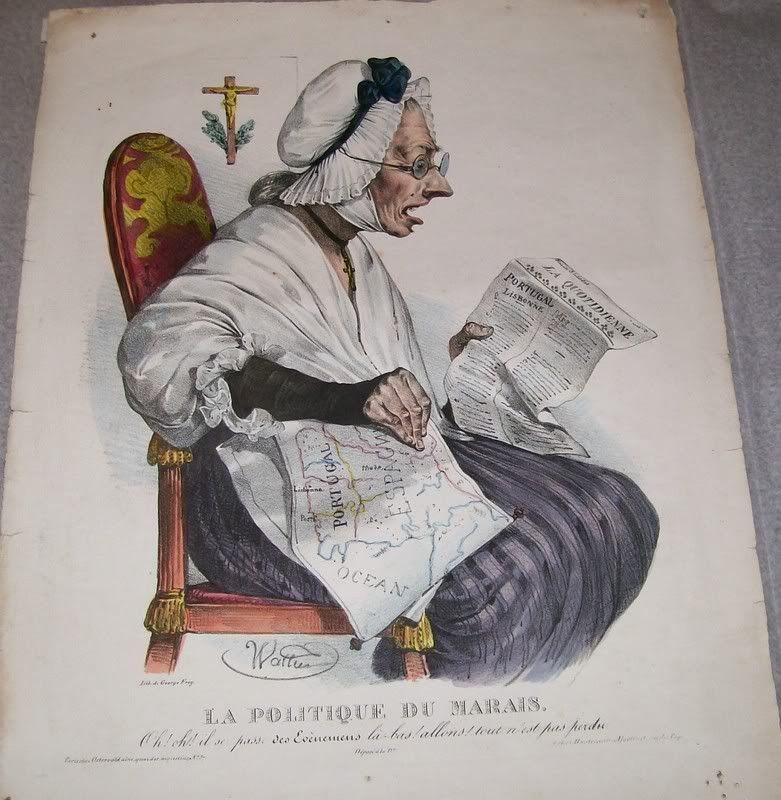


 hahahha
hahahha